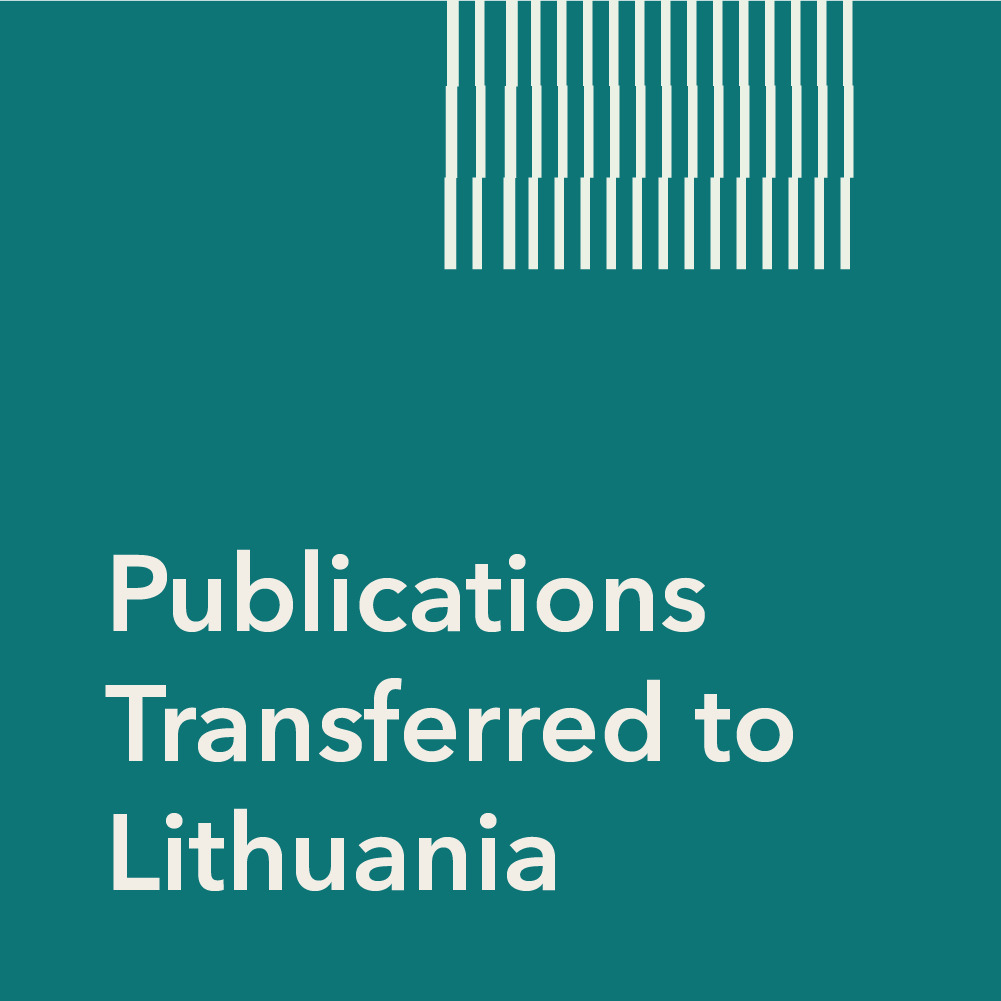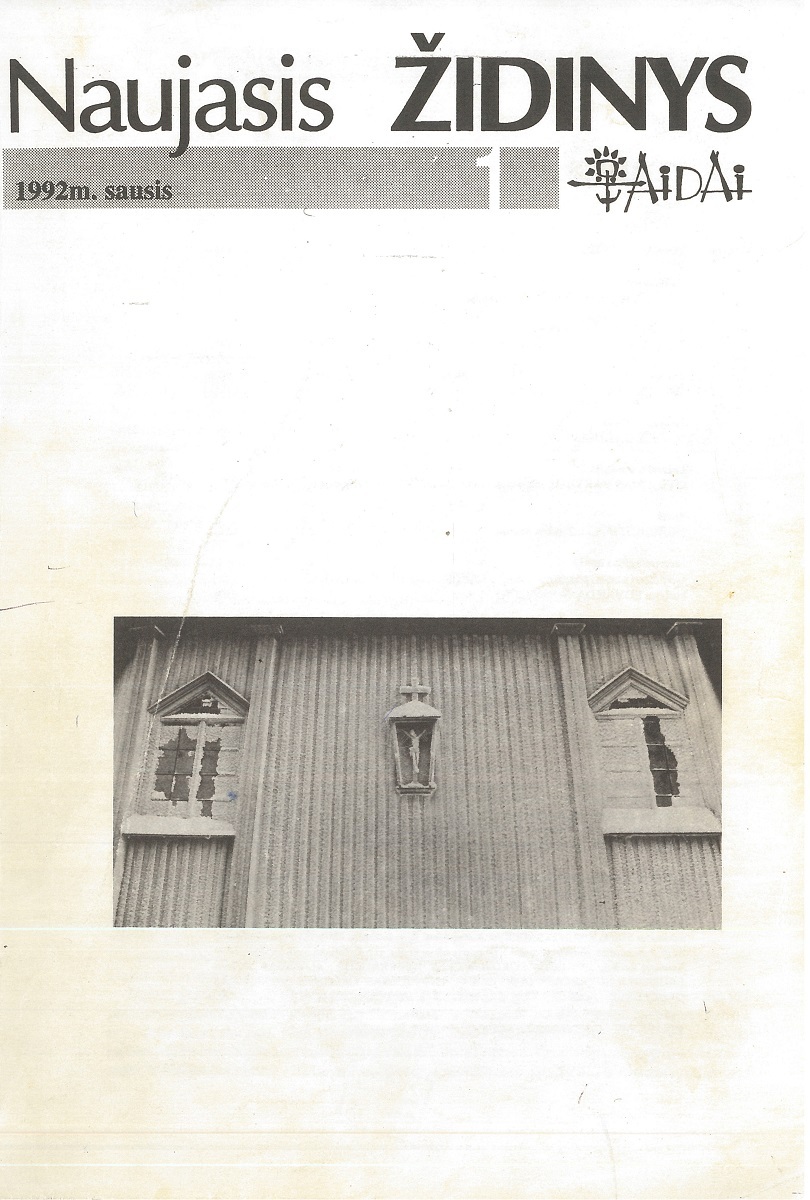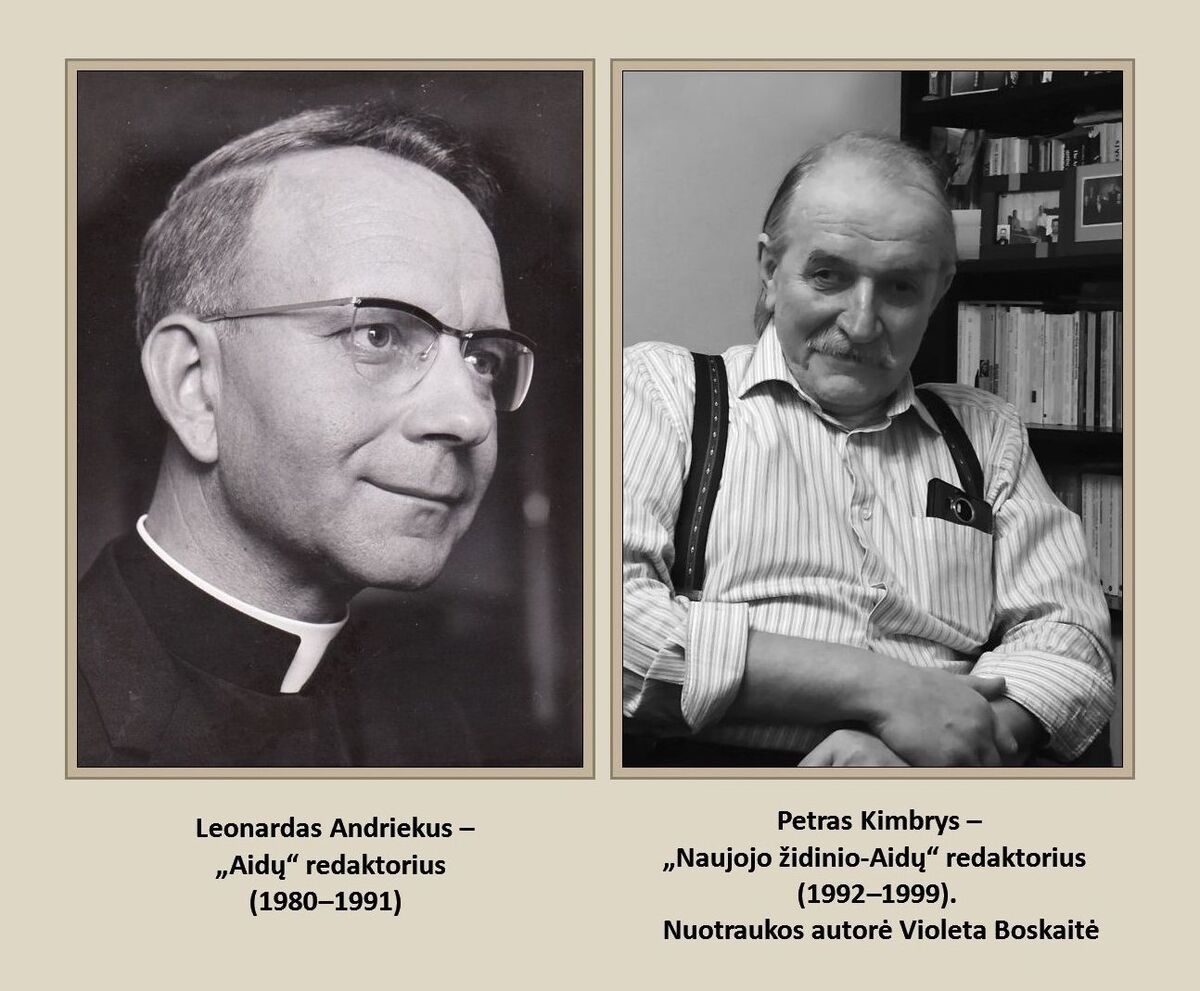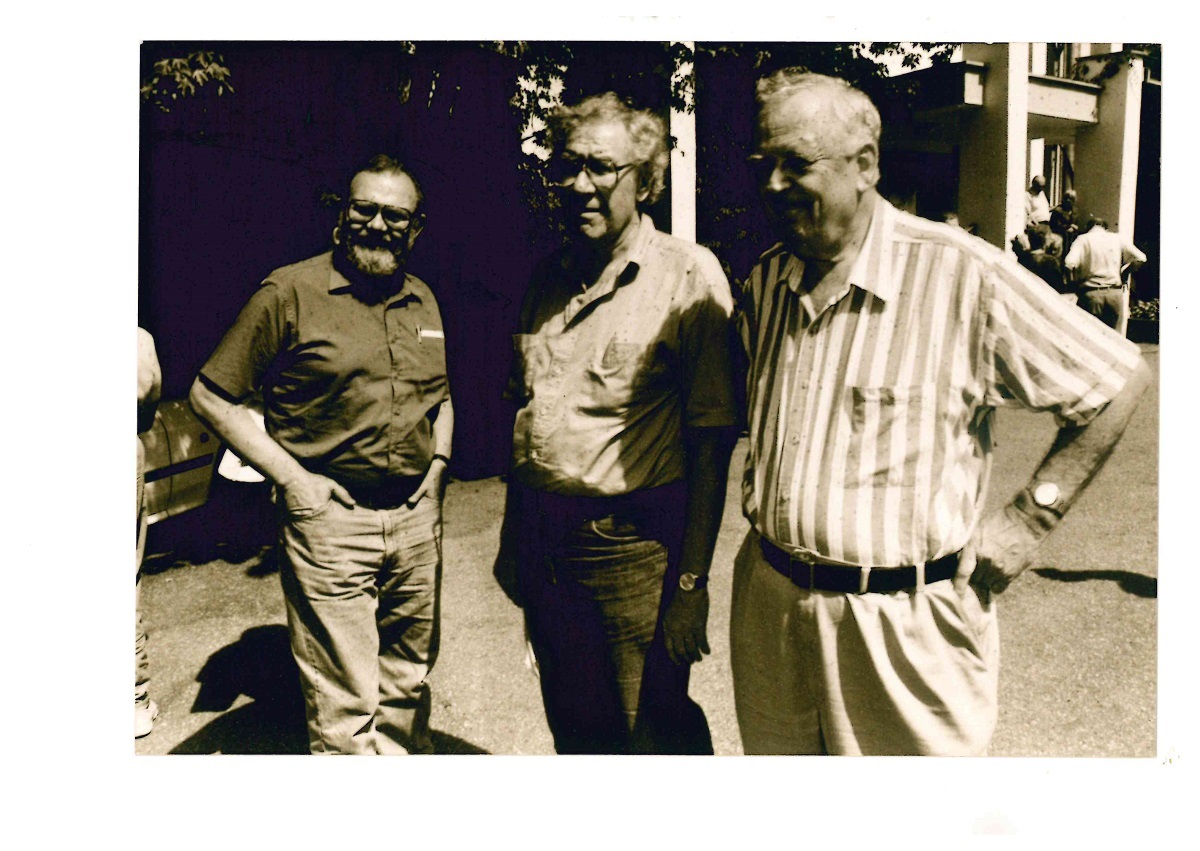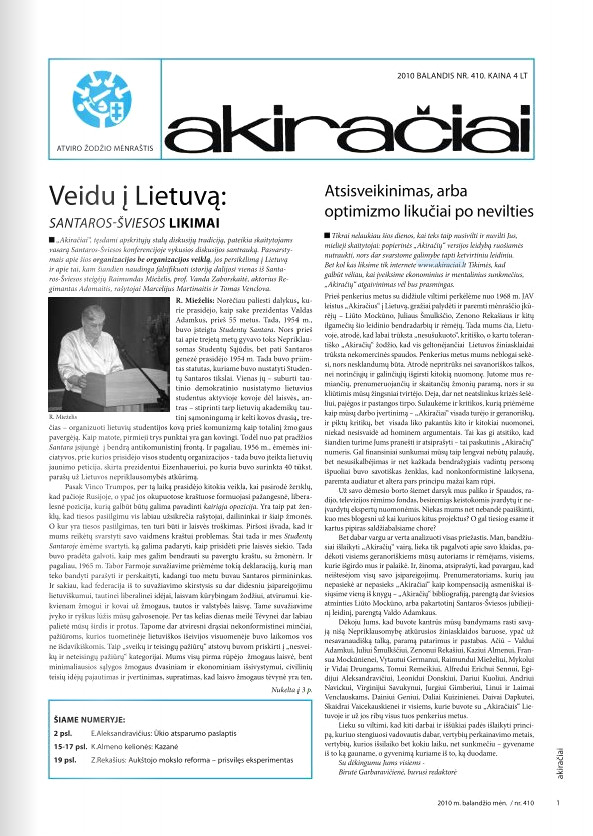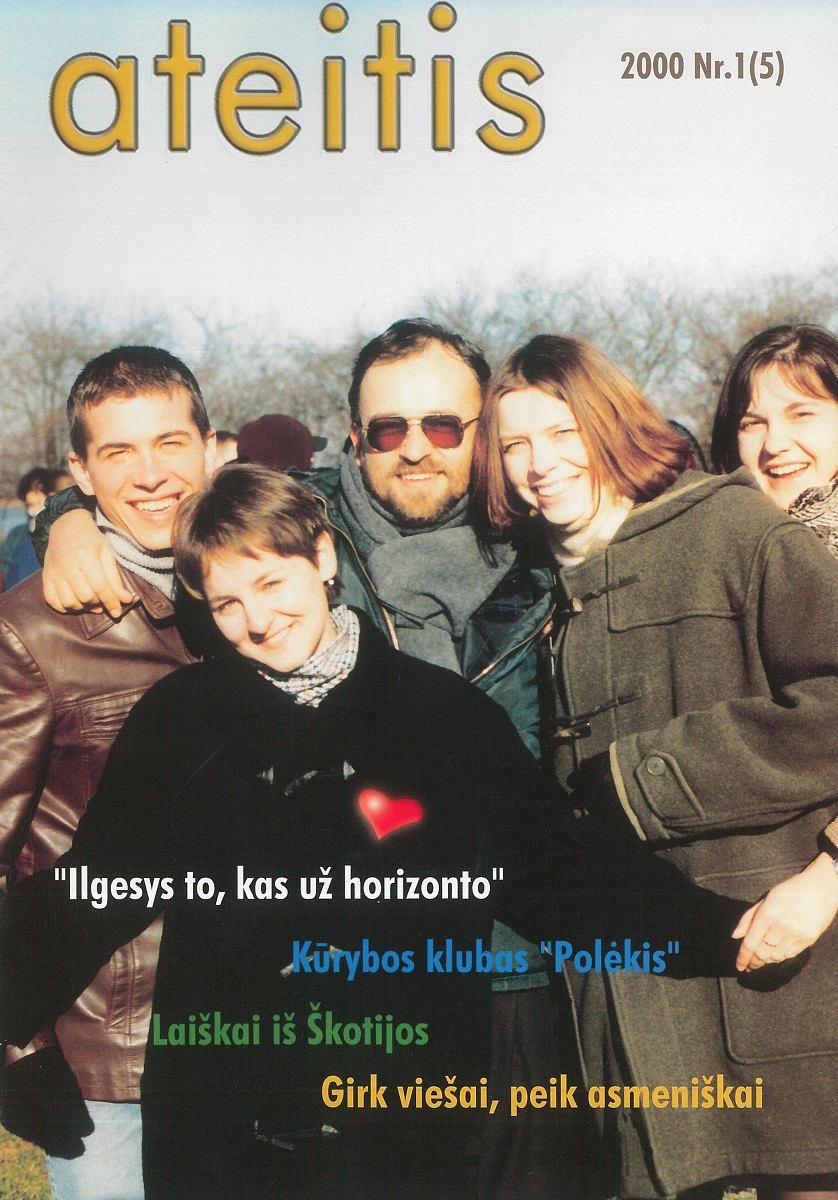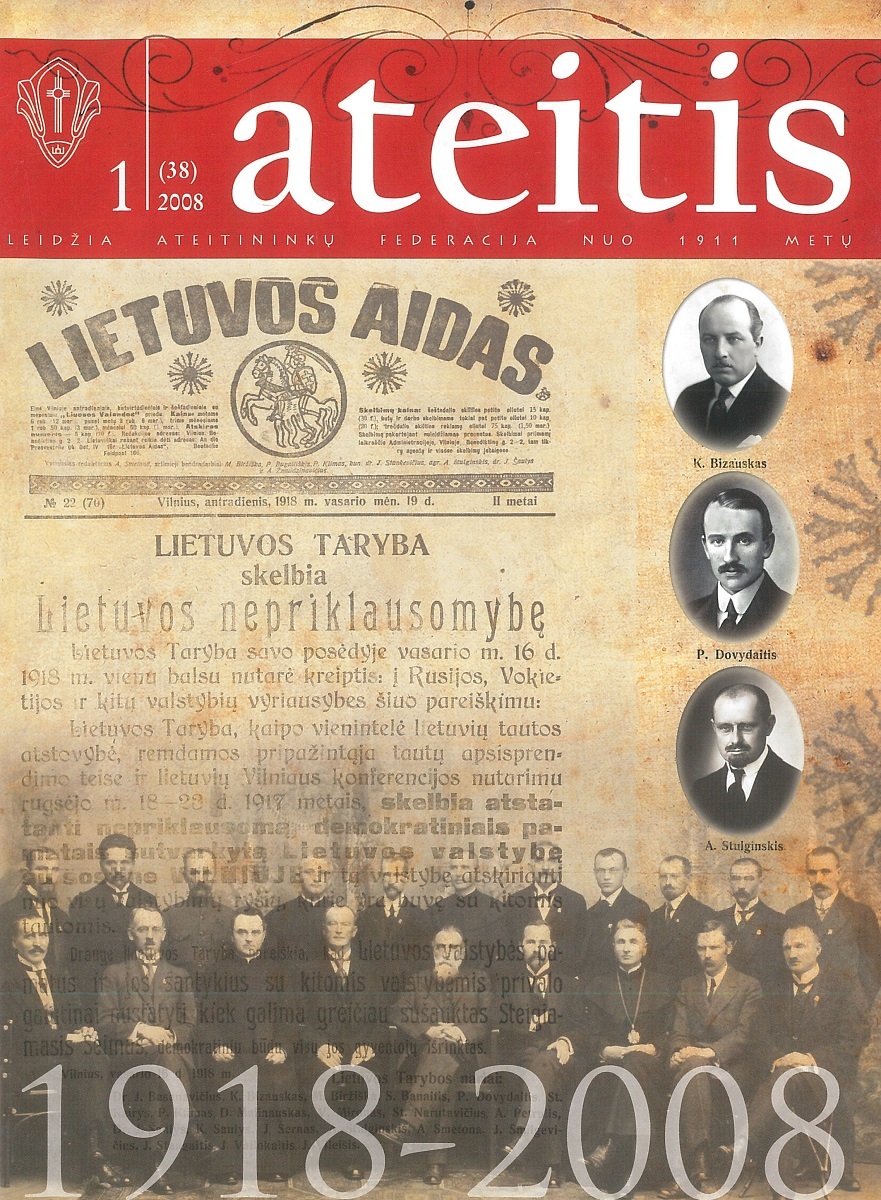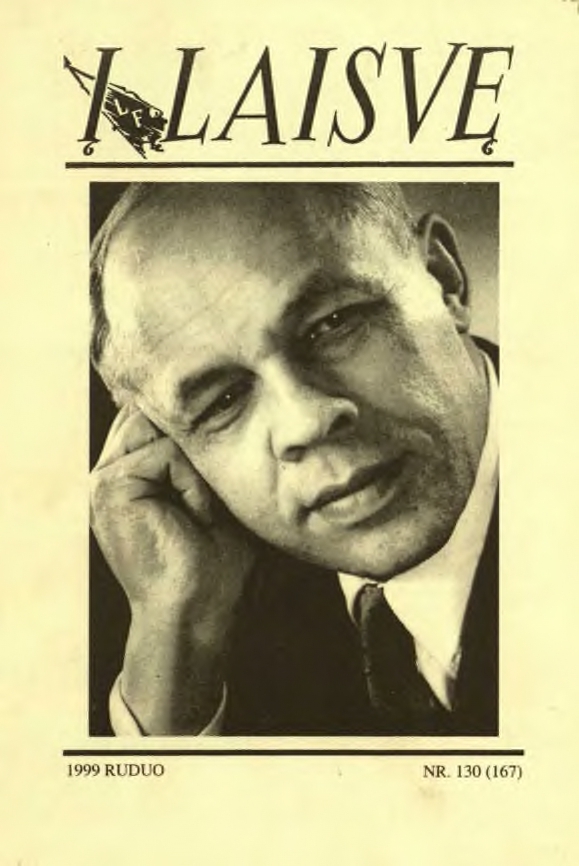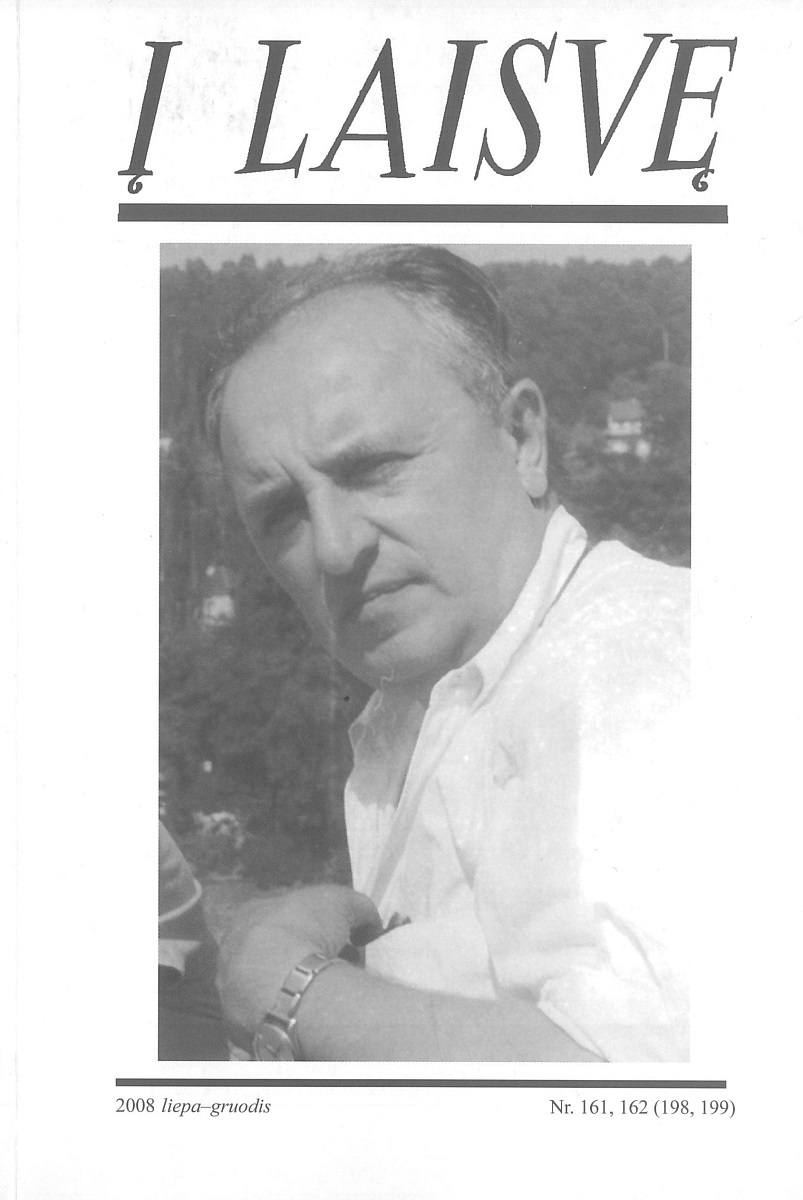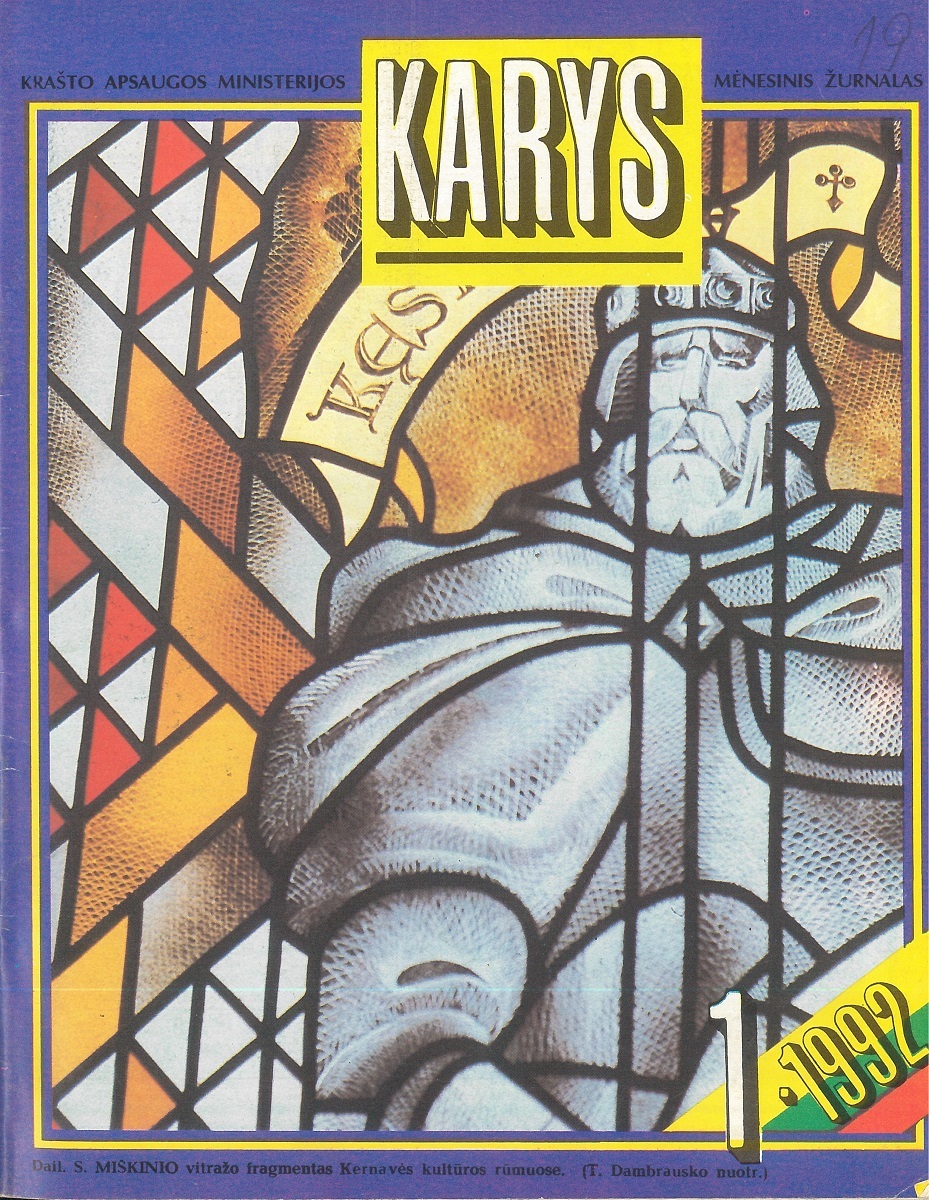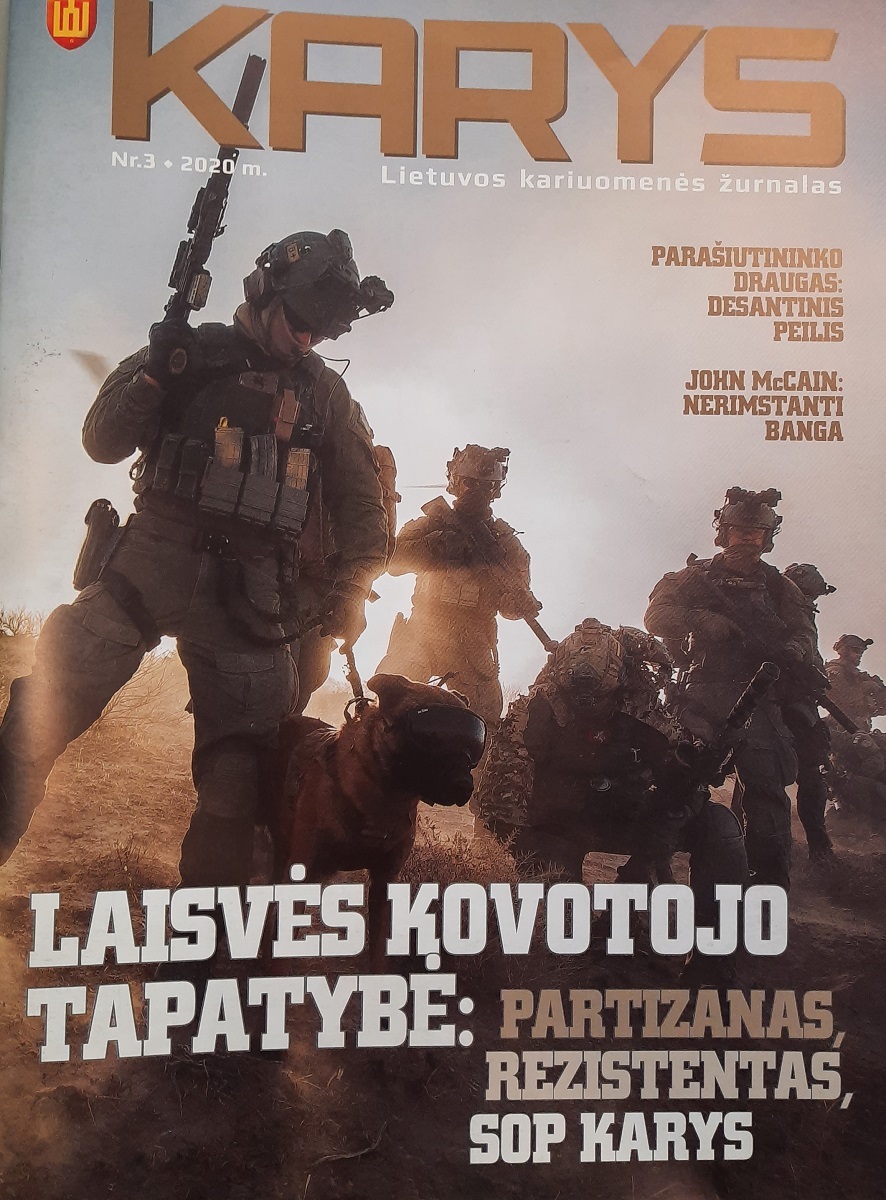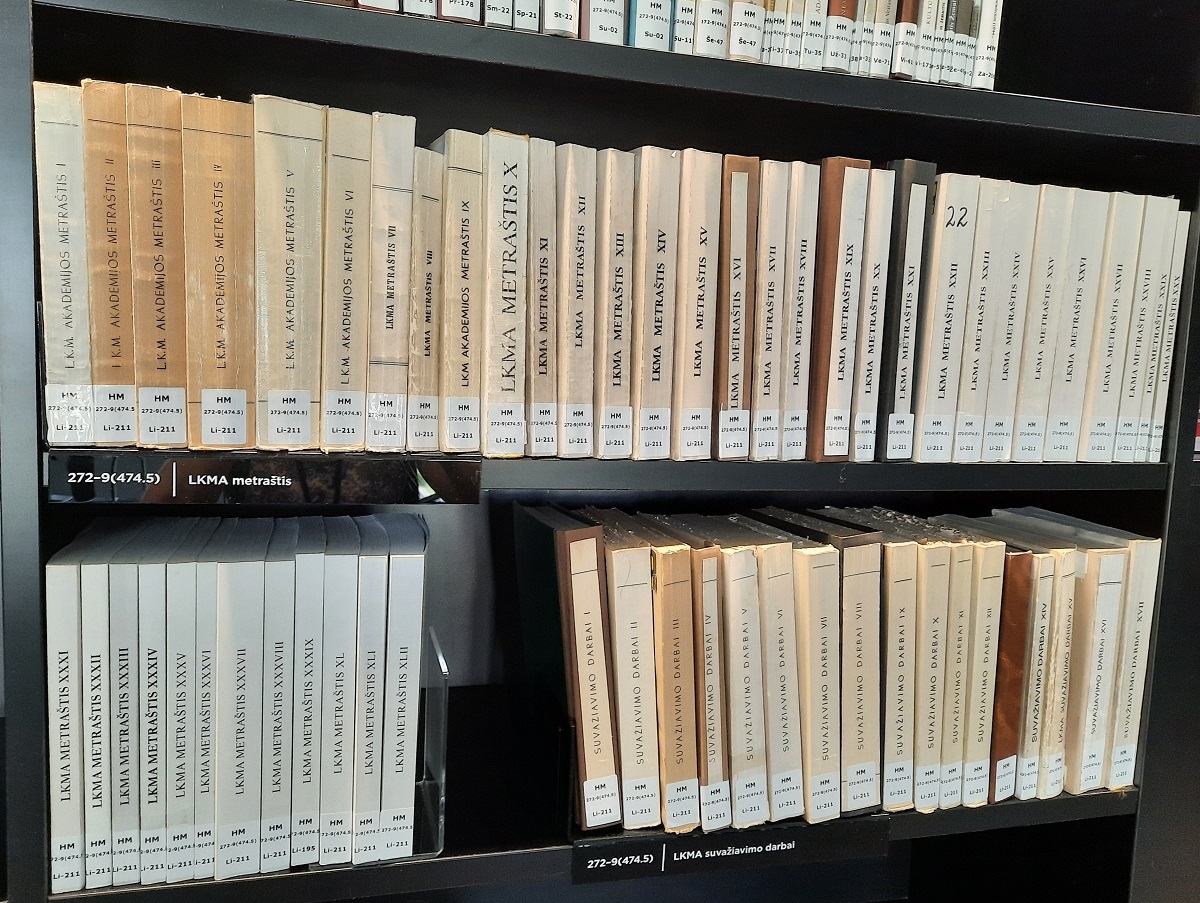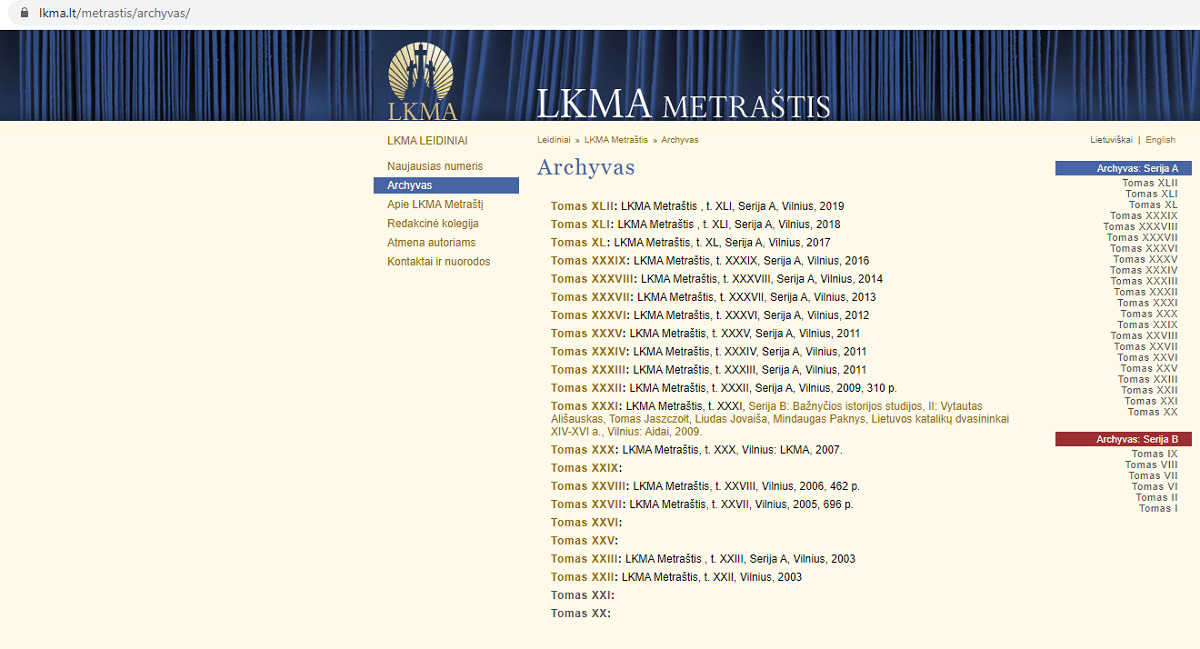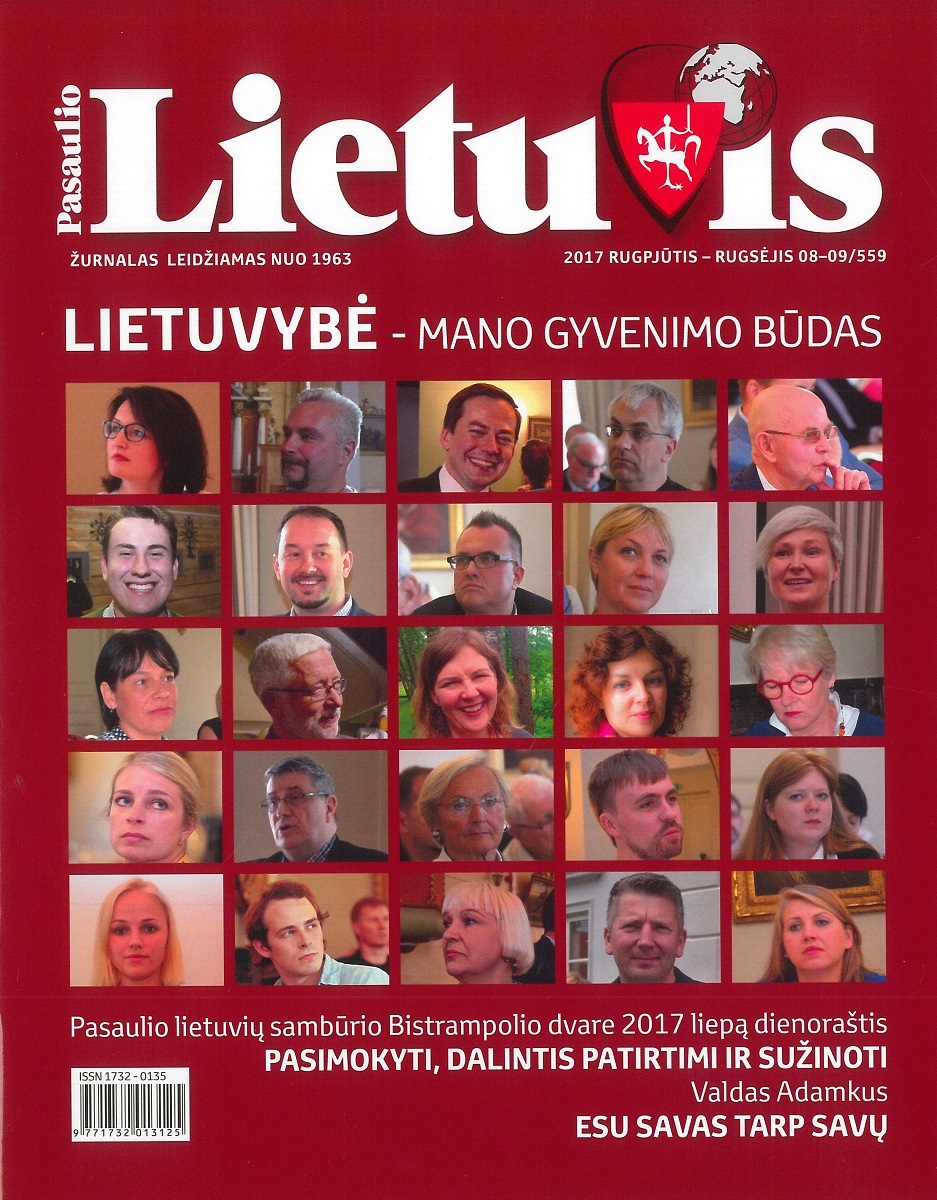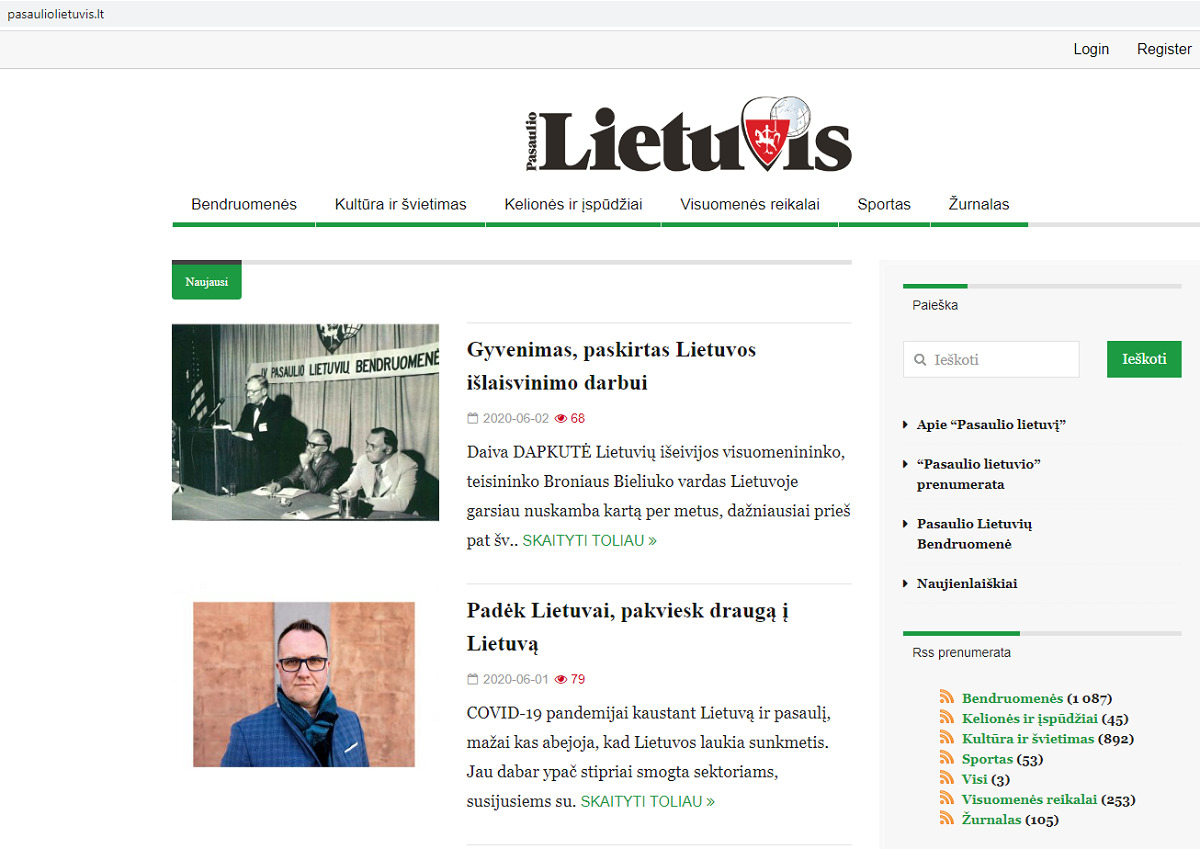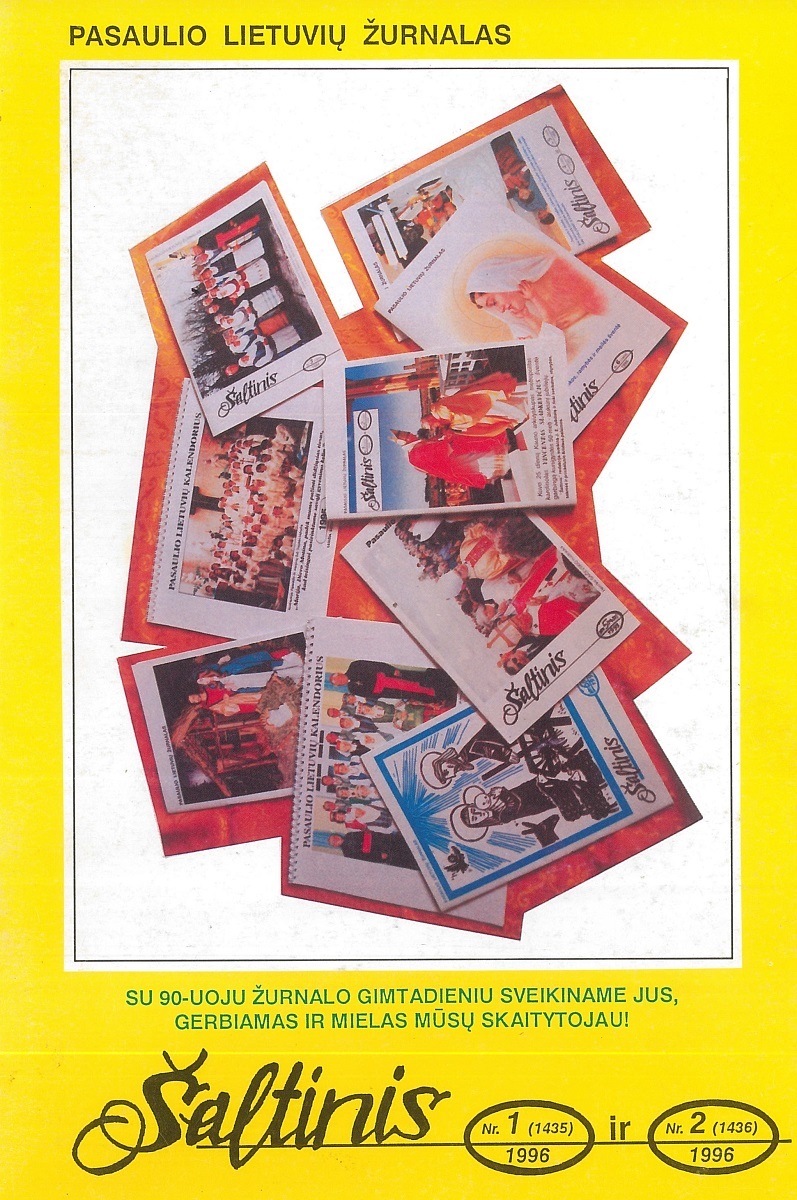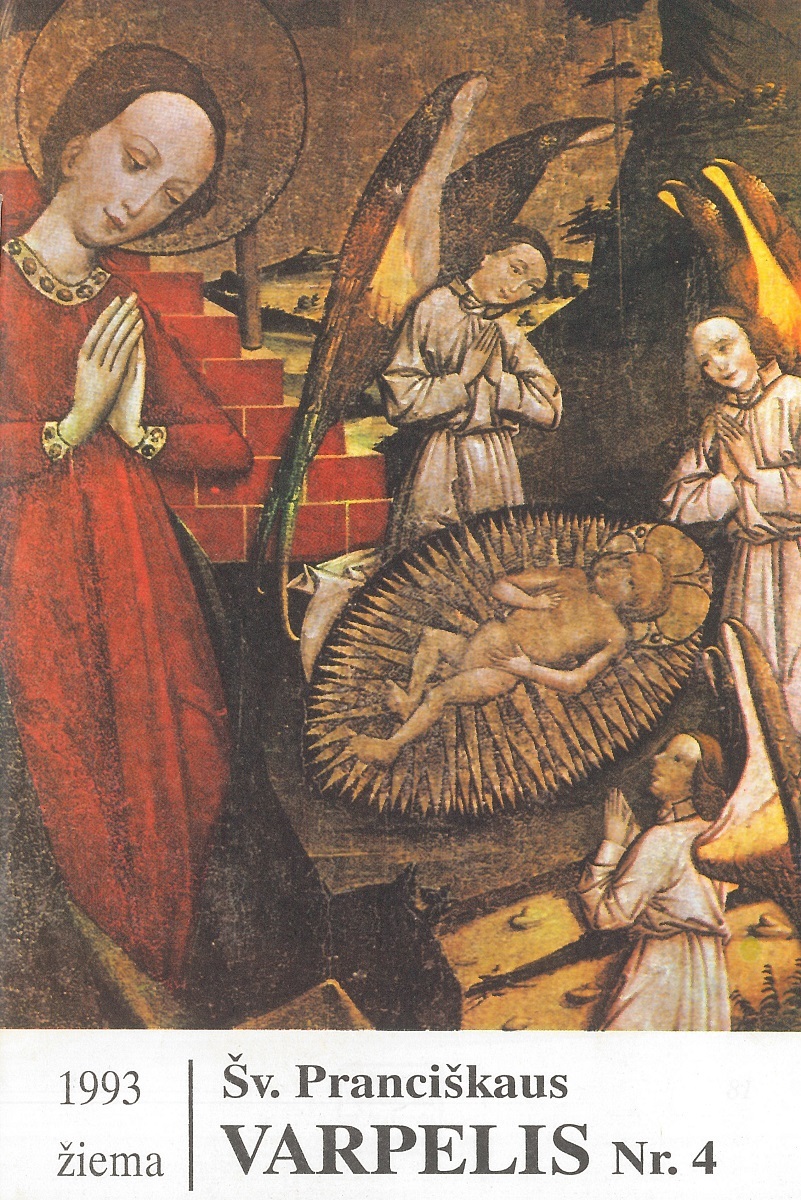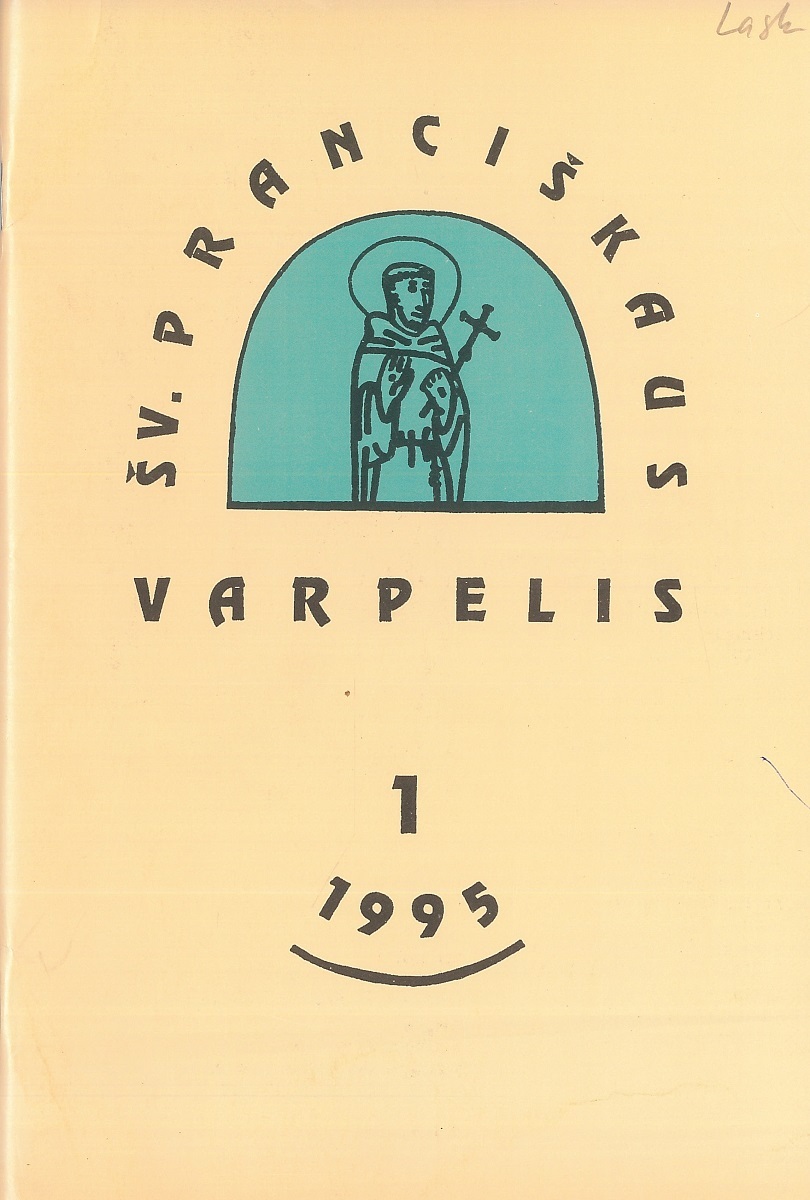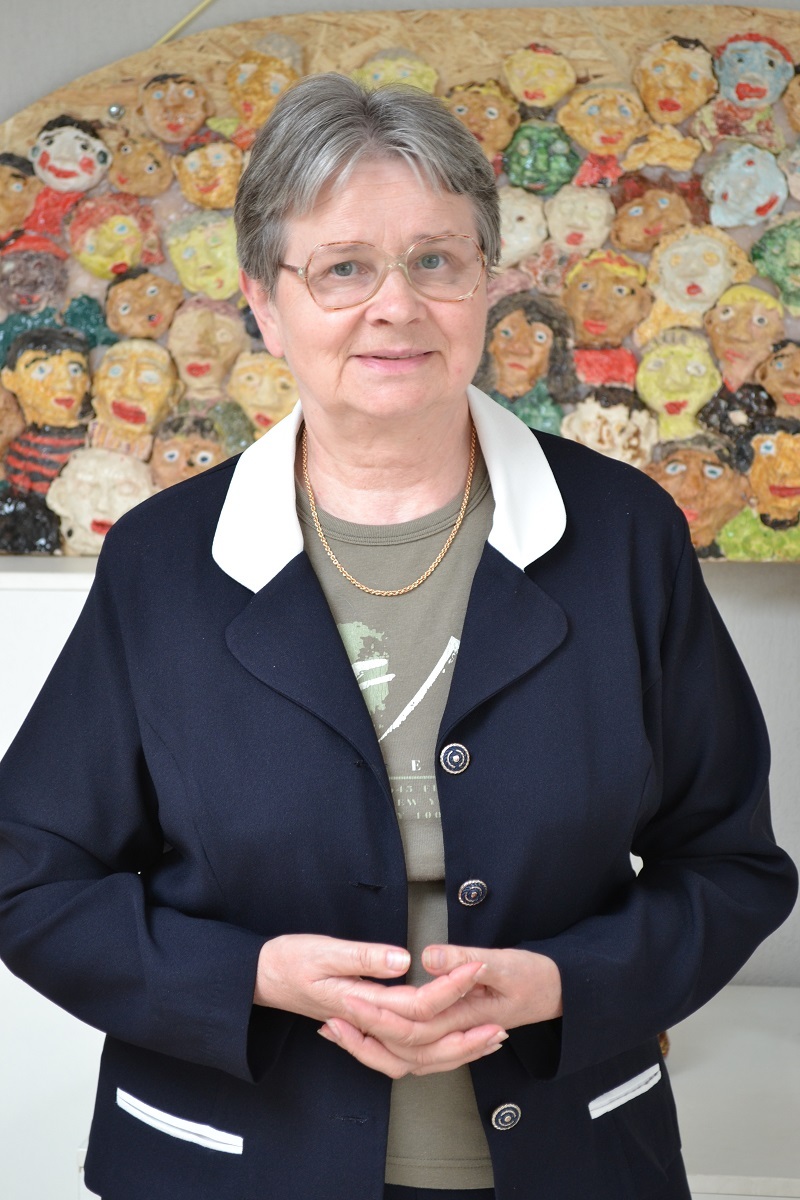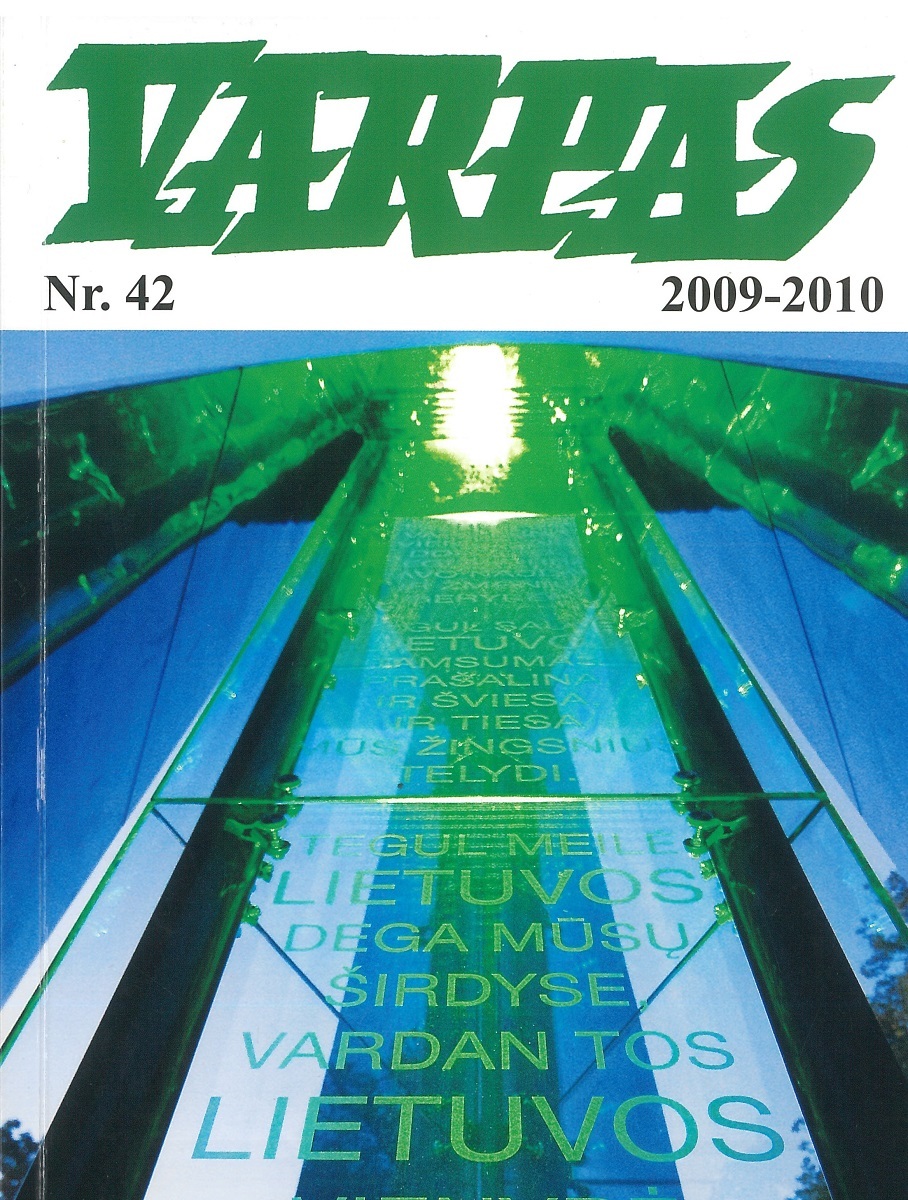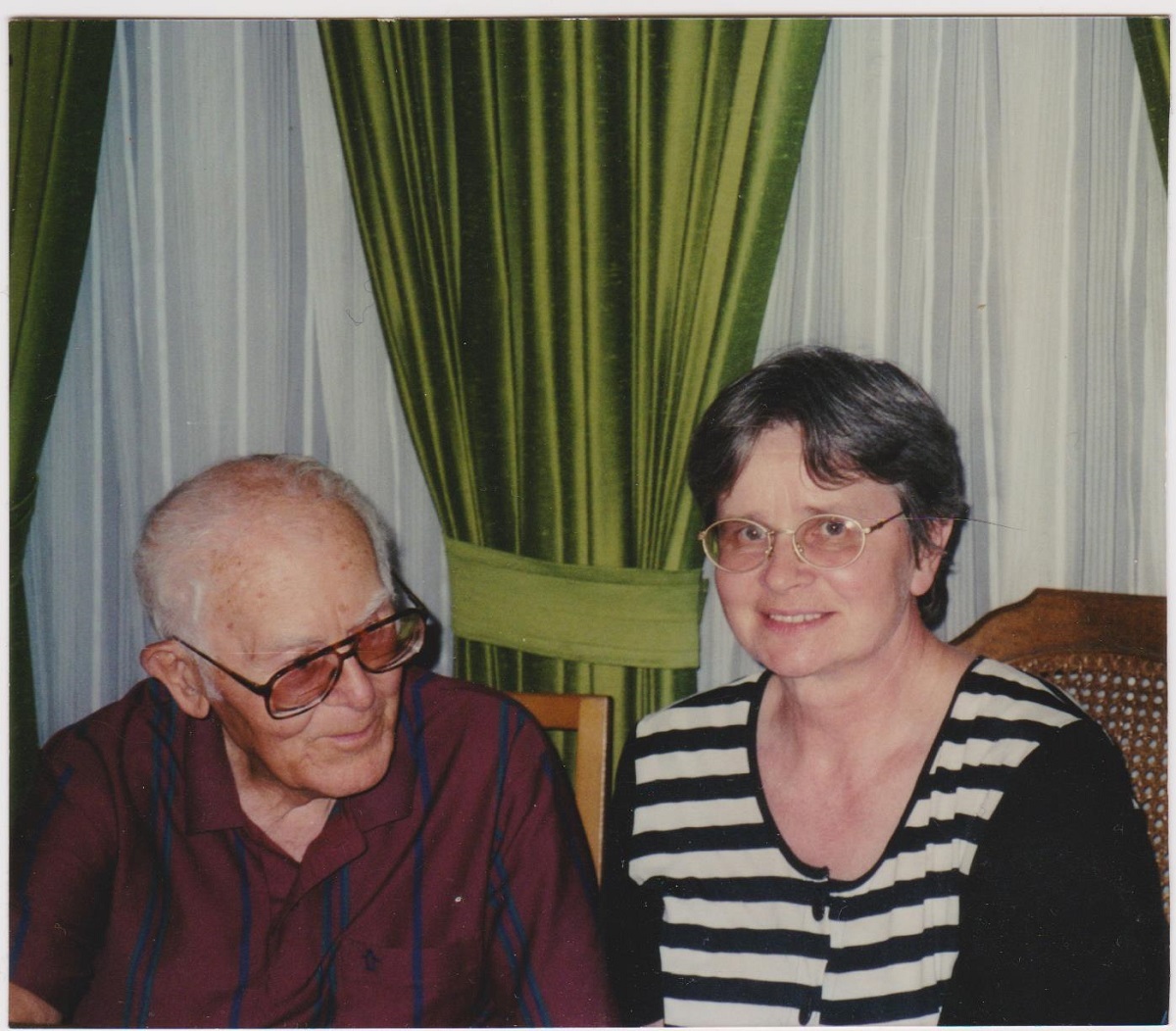-
-
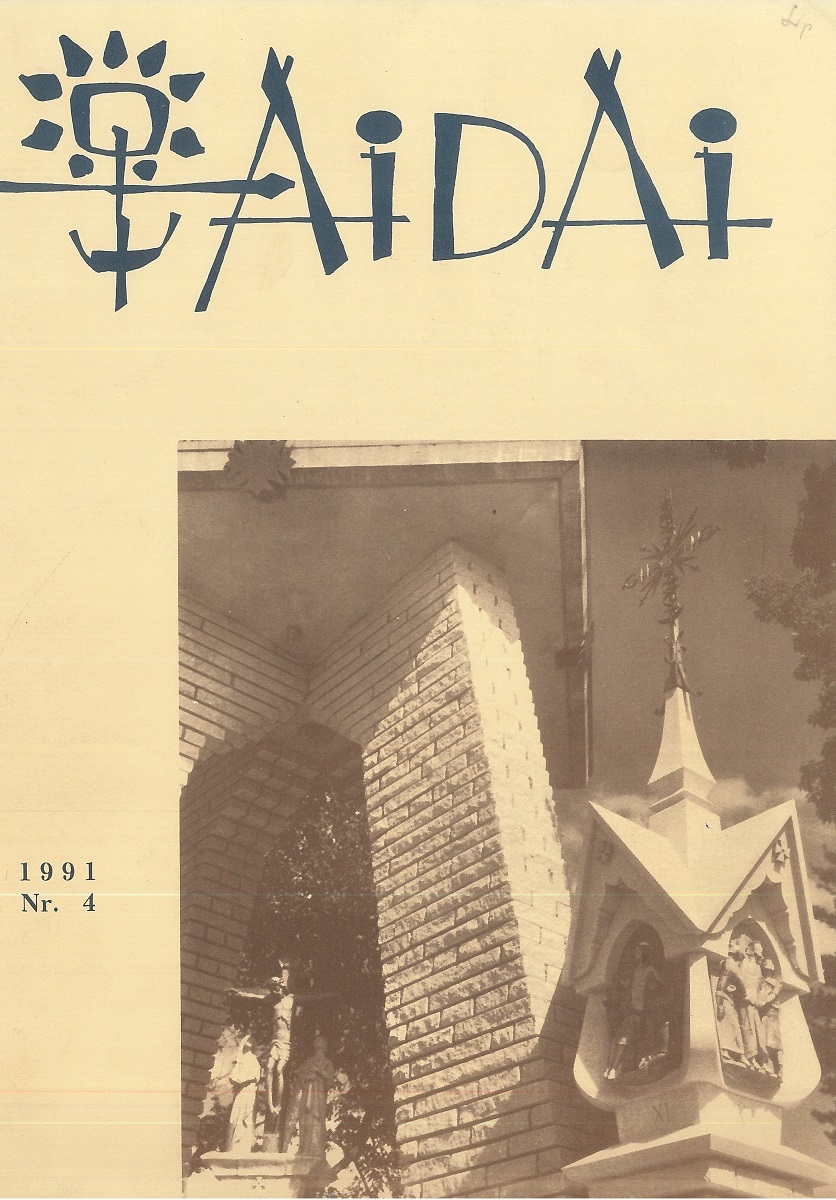
Front cover of the last issue of Echoes published in the diaspora, No. 4, 1991
New Hearth-Echoes
Naujasis židinys-Aidai
The Catholic Cultural magazine Echoes was first published in Germany in 1944, then continued in the US from 1949 to1991. Among other challenges facing the press in the diaspora, with this magazine’s high standard for content and design, a major issue also became the scarcity of writers. Not everyone was capable of writing at the level required by editorial policy.
The declining editorial board of Echoes saw a similar magazine, New Hearth, begin publication in Lithuania in 1991 and suggested that its editor, Petras Kimbrys, join forces with them and publish together. This was agreed upon and the last issue of Echoes appeared in 1991. In it, long-time editor Rev. Leonardas Andriekus wrote: “Lithuania is free again, the cruel forces of Communism have been crushed, the entire nation is burning with desire to create spiritual and economic well-being. Now nothing will hinder the diaspora from being close to its nation. Communication will be open and intense for cultural and economic contact. The diaspora, having been a separate entity restricted by the occupation, will be an integrated part of the nation. Thus Echoes begins a new era of its existence, joining forces with New Hearth. We are convinced that a joint magazine such as this will successfully continue the cultural mission of Echoes.”
The publishers of Echoes provided the new venture with financial support, invited its former readers to subscribe to the joint publication, and its writers to contribute their articles. In 1992 the first issue of the merged magazine New Hearth-Echoes appeared, with some of the content provided from Echoes archives. Faithful Echoes readers were not always happy with the new version of the magazine and the Echoes content published in it. Despite occasional criticism, Lithuanians in the diaspora considered New Hearth-Echoes one of the best publications in Lithuania, and helped promote subscriptions and readership. The joint publication is still being produced and contributes to the promotion of Christian culture in Lithuania, with particular attention to younger readers and authors.
Read digital issues of Echoes on the portal epaveldas.lt.
Most issues of the joint publication New Hearth-Echoes are available here. -
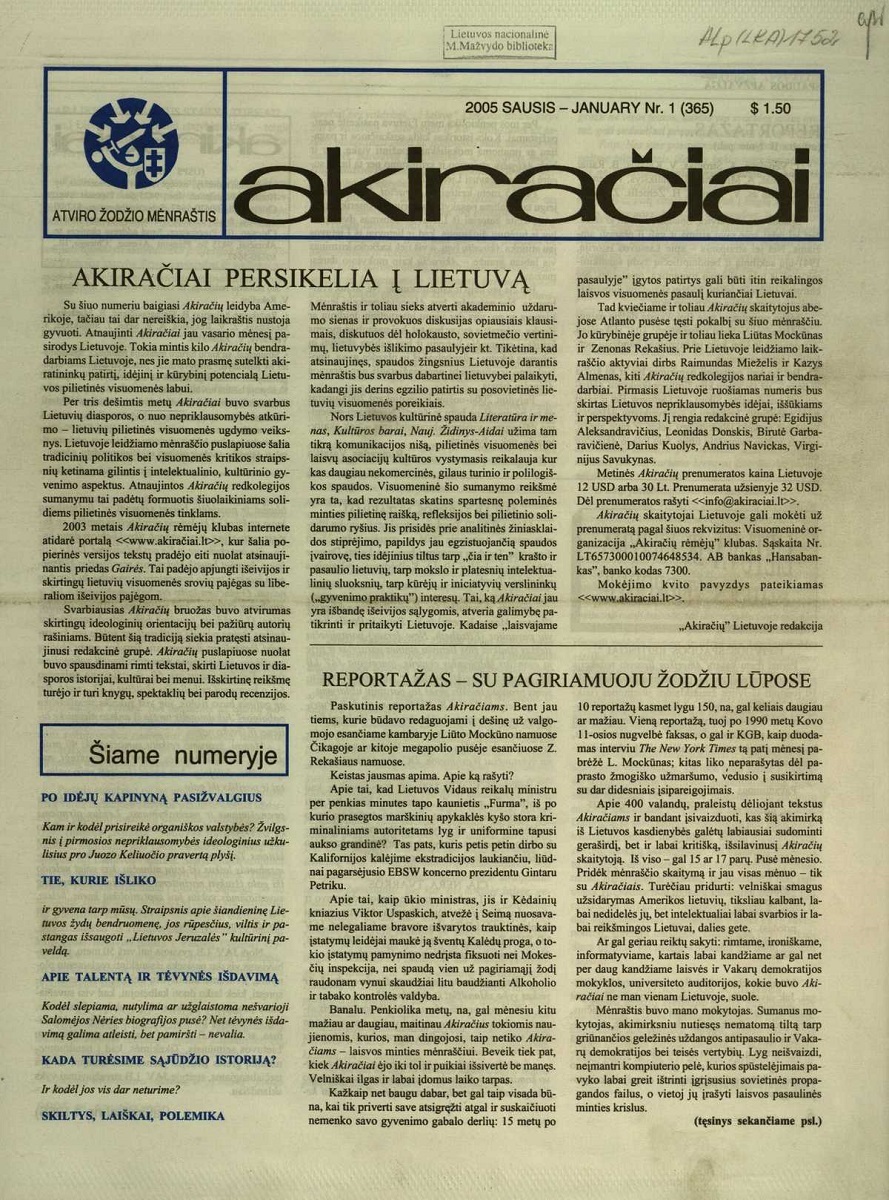
The last issue of Horizons published in the diaspora, January, 2005.
Horizons
Akiračiai
The monthly Horizons first appeared in 1968 and was unique in its policy of free speech and unrestricted communication with intellectuals and creatives in occupied Lithuania, a contentious issue in the diaspora at the time. It published articles that were bold and anti-authoritarian.
Once Lithuanian independence was restored, Horizons was faced with the same challenges as other media in the diaspora – a decline in readership, lack of writers and relevant or interesting material, editorial fatigue on the part of long-term staff. After 1991, when collaboration with Lithuania was no longer prohibited, and was in fact encouraged, Horizons lost its unique cachet of originality. With community life in the diaspora becoming more boring, an ever-increasing number of articles was taken from the press in Lithuania or written by native Lithuanian writers. Its open-mindedness toward Lithuania and close ties with the “Santara-Šviesa” organization (literally, Accord-Light) gave rise to a group of readers and cohorts in Lithuania.
When Liūtas Mockūnas, one of the two editors of the monthly, decided to move to Lithuania, Horizons was meant to cease publication, but supporters in Lithuania decided to continue publishing. The former editors expressed their farewells in January, 2005, and the first issue of the monthly published in Lithuania appeared on February 16 of the same year.
The editors from the US shared their experience and insight with the new editorial staff. However the monthly was unable to establish its new identity or position itself in the dynamic arena of the press in Lithuania. As the number of faithful readers and subscribers declined, and new followers failed to materialize, financial difficulties became insurmountable (although there were some non-traditional attempts at fundraising, for example, requesting donations to the monthly instead of gifts from friends of the editors for their birthdays).
The year 2009 saw only a few issues published, and in 2010 publication was discontinued. Horizons had fulfilled its role both in the diaspora and in Lithuania. It was an exercise in volunteerism and responsibility for publishing staff, and for its readers – an example of courage, critical, anti-authoritarian thinking and civic consciousness.
Digital issues of Horizons (1968-2005) are available on the portal epaveldas.lt. -
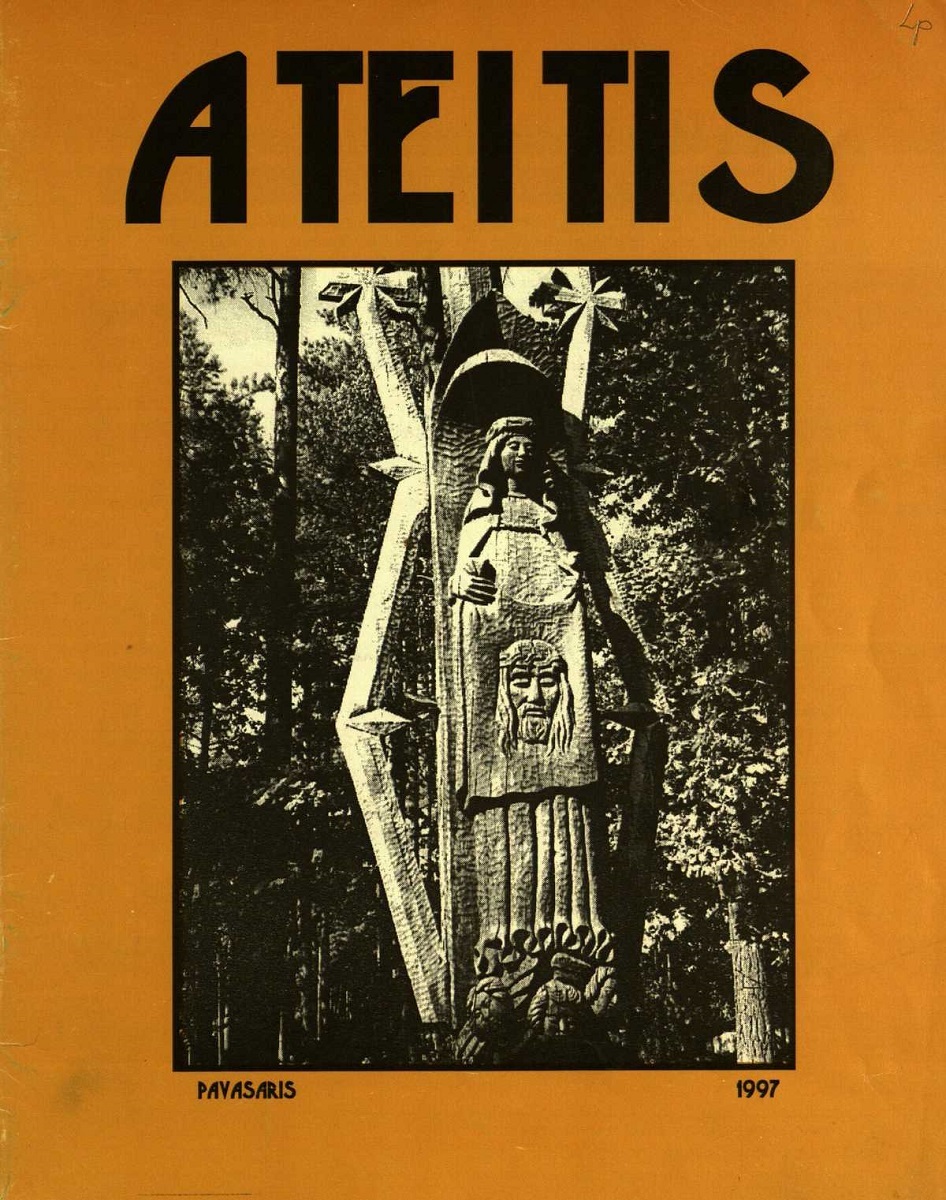
Future, spring 1997. The last issue published in the diaspora, under editor Romualdas Kriaučiūnas.
Future
Ateitis
“Ateitis” refers to a youth organization (now a federation) established at the turn of the 20th century to nurture new generations of upstanding, educated patriots, Catholic leaders espousing family and social values. Published since 1911, the monthly informed a group of socially committed intellectuals who contributed significantly to the development of Lithuania’s national, social, cultural and intellectual development. Until 1940, Future was published in Lithuania, then in displaced persons’ camps in Germany from 1946 to 1949, in North America from 1950 to 1997, and in Lithuania again since 1999.
Aside from the same challenges that other publications faced in the diaspora, both the magazine and the federation itself had to find an equilibrium between the two arms of the organization, one in Lithuania and one in the diaspora. From 1989 to 1994, under editor Danutė Bindokienė, much of the content was focused on the resurgence of the organization in Lithuania in 1989, its summer camps, meetings and conferences. Publication was suspended in 1994, with one issue appearing again in 1997.
With the organization growing in Lithuania, its central committee was transferred there in 1997, and efforts to revive the magazine began, with positive results in 1999. Although the first few issues were more similar to a newsletter, the publication process was “unleashed”, as federation president Vygantas Malinauskas noted, and continues today.
The financial support provided by members in the diaspora enabled the magazine, with its limited circulation and non-populistic approach, to maintain its place in the dynamic Lithuanian media and form a core of readers.
The publishers often debated about their target audience. Was it the membership of the organization or a wider demographic? Was it youth or older readers? How could they make the magazine a forum both for members in the diaspora and in Lithuania? Answers to these questions largely depended on the editors, who changed often in the early years of publication. A more stable identity was established with Reda Sopranaitė, editor from 2006 to 2018.
Although a website has been online since 2009, www.ateitieszurnalas.lt, a print version of the magazine is still being published.
Digital issues (1911-1997) of Future are available on the portal epaveldas.lt. -
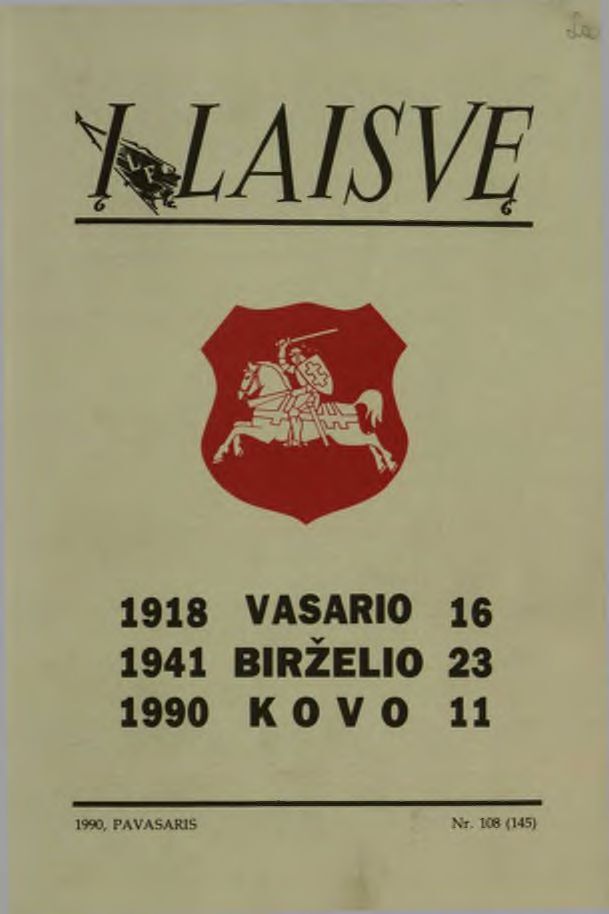
Toward Freedom No. 108 (145), 1990, published after the Restoration of Lithuanian Independence
Toward Freedom
Į laisvę
The history of the cultural-political, resistance-oriented magazine Toward Freedom is inseparable from the anti-Soviet and anti-Nazi movements and their followers in Lithuania and in the diaspora. It first appeared as a daily during the time of the 1941 insurrection and continued this way until the end of 1942. A few issues were published in the displaced persons’ camps in Germany in 1943 and 1944, and then it was renewed in 1953 in the diaspora, where it lived on as a periodical until 1999. Since 2000 it has been published in Lithuania.
The publishers, known as Friends of the Lithuanian Front, were not only a resistance movement, but also promoted a Christian worldview, and sought political goals as well. This was the only ideological movement in the diaspora to put forward a concept of organizing a government once Lithuania’s statehood was restored. Once independence was proclaimed again, efforts were made to introduce Lithuanians and their politicians to the program created in 1958, called “Toward a Complete Democracy”, and assist in its implementation.
An important role in promoting the ideas in this program was played by the affiliate of the Toward Freedom Foundation for the Promotion of Lithuanian Culture established in Lithuania in 1990 as well as the publication of the magazine transferred from the US from 1994 onward.
Although readership declined in the diaspora, it increased in Lithuania. For this reason, the board of the Friends of the Lithuanian Front decided to return the entire publication to Lithuania. There, editor Aldona Žemaitytė emphasized the magazine’s important role in renewing and updating the ideas of a the “Complete Democracy” program.
Despite their best efforts, the Friends of the Lithuanian Front were unable to attract enough followers to help disseminate these ideas or fund the publication. Much of the funding was provided by supporters in the diaspora, and once their support decreased, the publication was forced to close. The final issue appeared in 2008.
Both in the diaspora and in Lithuania, Toward Freedom was a significant testimonial to the resistance movement and democratic discourse in Lithuanian historical memory.
Toward Freedom issues from 1943 to 2008 are available on the portal epaveldas.lt. -
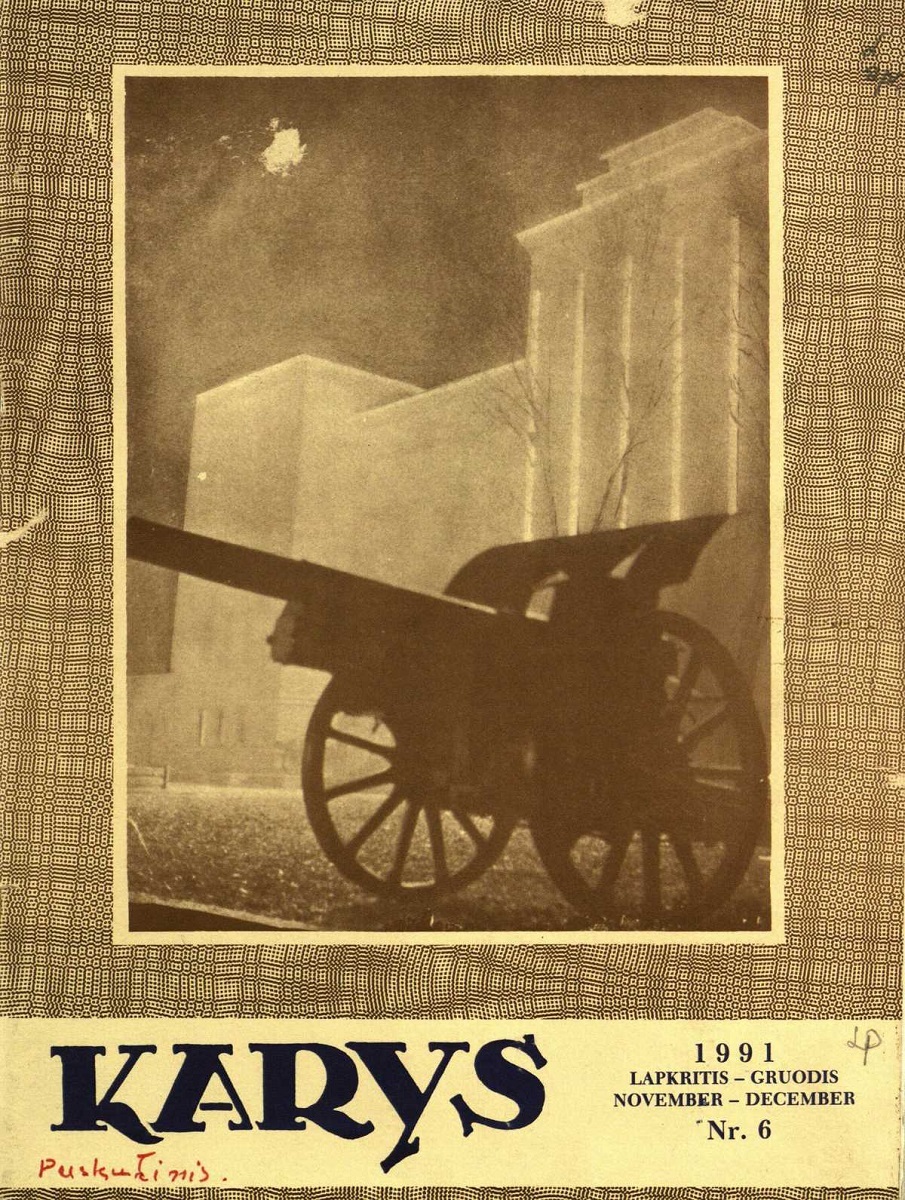
The final issue of Soldier published in the diaspora, No. 6, 1991
Soldier
Karys
Today, Soldier is the magazine of the Lithuanian Armed Forces. From 1919 to 1940 it was published Vilnius, from 1941 to 1944 – in Vilnius; from the end of 1944 and in 1945 – in Germany. In 1950 its publication was renewed in the diaspora, printed until 1991 by the Lithuanian Franciscan Press in New York.
In the diaspora, Soldier had become a magazine for Lithuanian veterans, providing information on Lithuanian history, war history, and on military issues, reflecting the patriotic mindset of Lithuanian soldiers and members of the Rifle Reserve (Šauliai), and belief in the restoration of Lithuanian independence.
The publishers and readers of Soldier were overjoyed with the news of the restoration of independence and the formation of the armed forces. The need then arose for a new military publication. The project was led by one of the founders of the Lithuanian army, Česlovas Jezerskas, and the director of National Defense at the time, Audrius Butkevičius. They recruited sports journalist Bronius Čekanauskas to be editor and to rejuvenate the magazine that had been published before the war and then in the diaspora up to that time.
At first the new publication encountered complications due to the reorganization of the Franciscan Press, which became unavailable. In 1992 the magazine was merged with the magazine of the same name being published in Lithuania. The publishers and readers of Soldier in the diaspora were already supporting its Lithuanian counterpart.
Gradually the structure of the magazine and its readership changed. With less focus on national defense and historical themes, it became more oriented toward lower ranking officers and regular soldiers, in the hope that it would provide reading material for their leisure time and help resolve problems occurring in military life, and attract a wider readership as well.
Digital issues of Soldier are available on the portal epaveldas.lt.Issues of Soldier from 2003 to 2020.
-
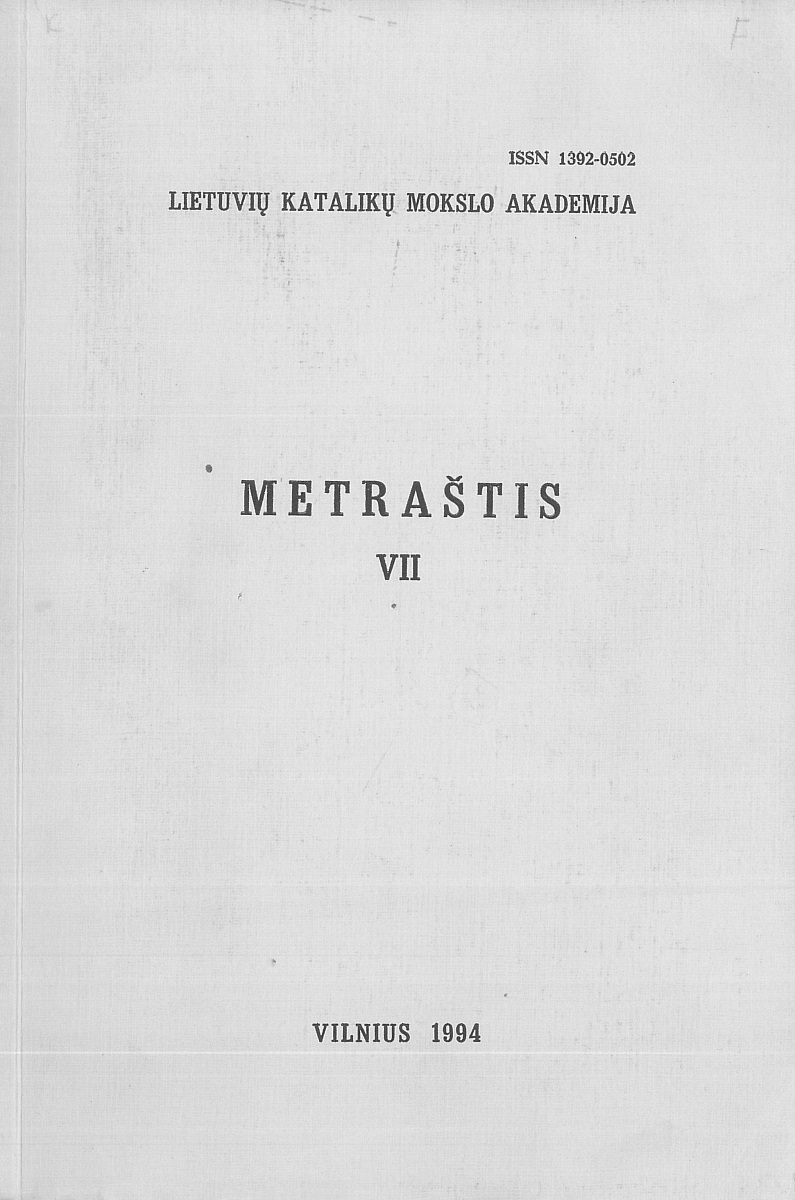
The first volume of the Annual published in Lithuania, Volume VII, 1994.
The Lithuanian Catholic Science Academy Annual
Lietuvių katalikų mokslo akademijos metraštis
The Annual, published since 1965, contained studies by the members of the Lithuanian Catholic Science Academy. Until 1992, it was published in Rome, with only six volumes of the journal appearing in the diaspora, under editor Rev. Antanas Liuima, SJ. In 1990, the Lithuanian Catholic Academy of Science was reopened in Lithuania, and once its board was transferred there in 1992, publication of the Annual was revisited. The seventh volume came out in 1994.
After that the annual was expanded. Since 2008 it has been published in two series: series A comprises the Annual, and series B – Studies in Church History, and it is printed on a regular basis. The publishers issue at least one volume of each series each year.
The Annual differs from other scientific publications in that it represents the academic Christian worldview. It consists of studies and sources relating to Christianity, its past and present in Lithuania and throughout the world, as well as reviews and reports on the activities of the Academy.
Most volumes of the Annual are available here. -
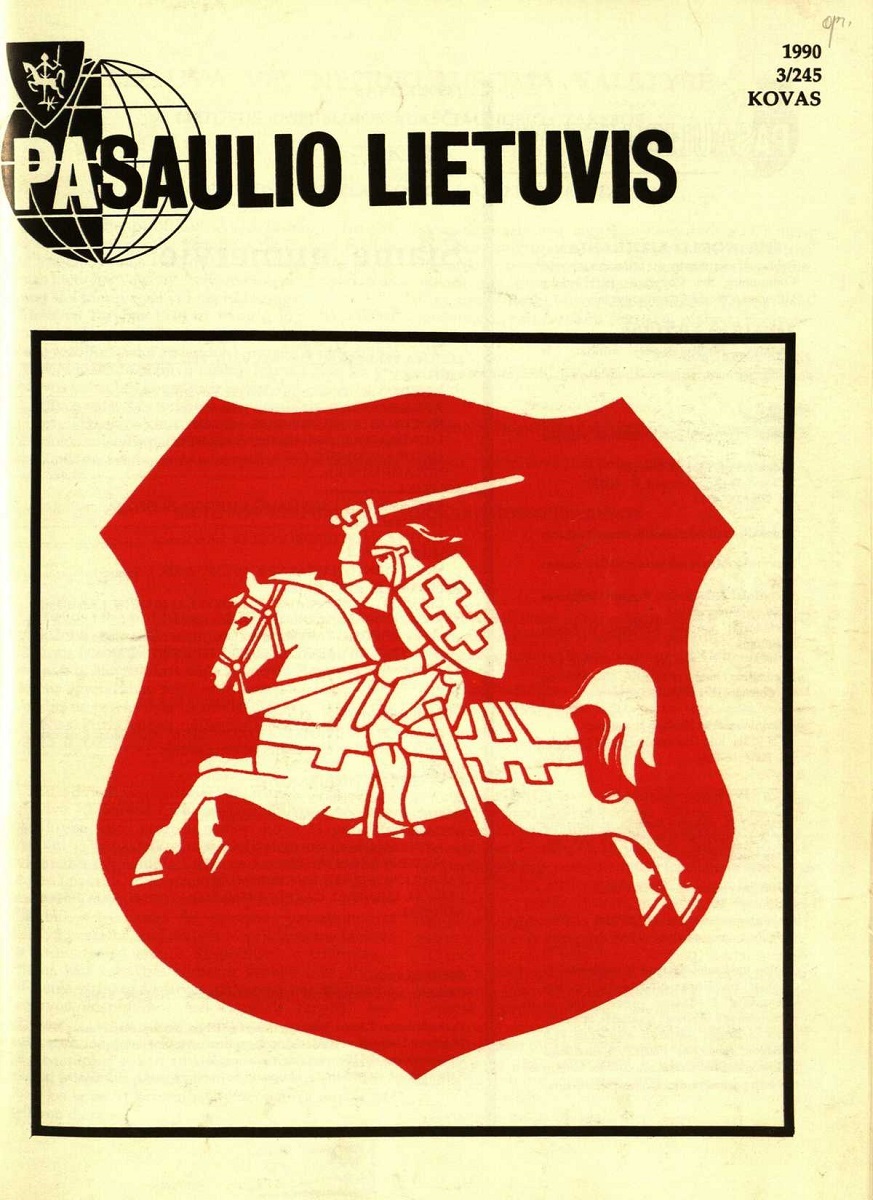
World Lithuanian, No. 3, 1990, published when the Restoration of Independence was proclaimed
World Lithuanian
Pasaulio lietuvis
The history of the World Lithuanian magazine parallels the changing diaspora and the development of the World Community itself as an institution. Published since 1963, the magazine has tried to reflect the life of the Lithuanian diaspora and create a forum for members of the Lithuanian community throughout the world.
The restoration of independence in 1990 heralded a wave of mass emigration from Lithuania. Sadly, many new immigrants were not interested in either joining the social structures established by earlier immigrants or forming their own. This became a challenge for the World Lithuanian Community which saw itself encompassing Lithuanians throughout the world, and affected the publication of the magazine as well.
As the post-war wave of immigrants grew older, the lack of readers, writers and funding crippled the Lithuanian press in the diaspora. Discussions about discontinuing publication of the World Lithuanian became more frequent. Unwilling to abandon its potential, the board of the Lithuanian World Community was determined to persevere, and searched for ways to make it more attractive to a wider readership and reduce expenses.
To this end, several solutions were adopted – entrusting editorial work to a younger generation of new immigrants and professional journalists, updating its design and renewing subject matter, and streamlining subscription payment methods. The increasing popularity of electronic media encouraged the publishers of World Lithuanian to put more of its content online. The transfer of editorial work to Lithuania in 2006 and its eventual printing there in 2011 enabled the publishers to reduce costs and bring the magazine closer to Lithuanian events relevant to the diaspora.
In 2010 the World Lithuanian’s circulation was 500 copies. Despite their best efforts, the publishers were unable to increase the number of subscribers. However, the website www.pasauliolietuvis.lt attracted more and more visitors.
These circumstances led the board of the World Lithuanian Community to resort to an annual publication beginning in 2020, as the website reached a wider audience more quickly. Nevertheless, the publishers had succeeded in maintaining the magazine and creating a website to promote the tradition of the publication embracing all Lithuanians.
World Lithuanian issues from 1963 to 2010 are available on the portal epaveldas.lt.
An interview with one of the editors of World Lithuanian, Dalia Staponkutė. -
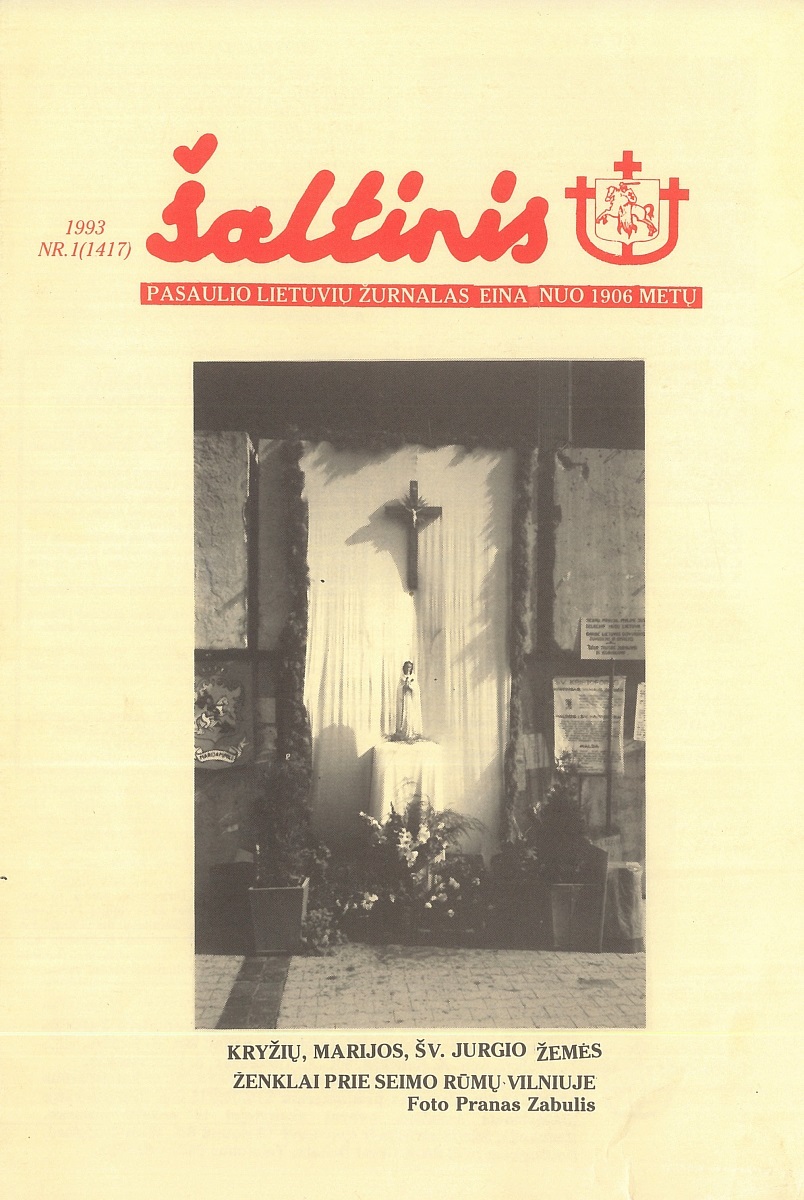
The Source, published in Nottingham, No. 1, 1993
The Source
Šaltinis
With the restoration of independence came the freedom to pursue religious life and opportunities for evangelization. Religious orders actively launched into the work of renewing spiritual life in Lithuania. One of those was the Marian Fathers, assisted by the Marians from the diaspora. A testimonial to the unification of their efforts was the transfer to Lithuania of the religious magazine The Source, published from 1961 to 1993 in Nottingham (UK). Editor Rev. Steponas Matulis, MIC, passed his duties to Rev. Petras Kavaliauskas, MIC, who was later replaced by Rev. Aušvydas Belickas, MIC. From 1993 to 1997 the magazine was published in Panevėžis, and from 1997 to 1998 – in Vilnius. Circulation was between 1,000 and 1,500 copies.
During publication in the diaspora, The Source had developed a familial community. Its pages were filled with articles on religious themes, and news about communities served by the Marian Fathers in the UK, Australia, the US and Argentina as well as Lithuania. It called itself a magazine for world Lithuanians, published since 1906 – referring to a publication of the same name published in Seinai at that time.
Publication in Lithuania saw an increase in content related to religious and community life in there, but readers in the diaspora were not forgotten, especially since their donations helped promote the magazine in Lithuania. As was true for many publications that had been transferred, readers of The Source would subscribe for themselves and for readers in Lithuania. Even so, The Source would not have survived without the financial support of the Lithuanian Marian Fathers. Eventually, increasing expenses forced the order to cease publication. In the last issue (No. 1-2, 1998) the editor informed readers that publication expenses far exceeded income. Rising costs were high enough to force the Lithuanian council to stop publishing the magazine altogether.
For six years, The Source in Lithuania had helped foster religious development and promote a sense of community and collegiality among all Lithuanians. -
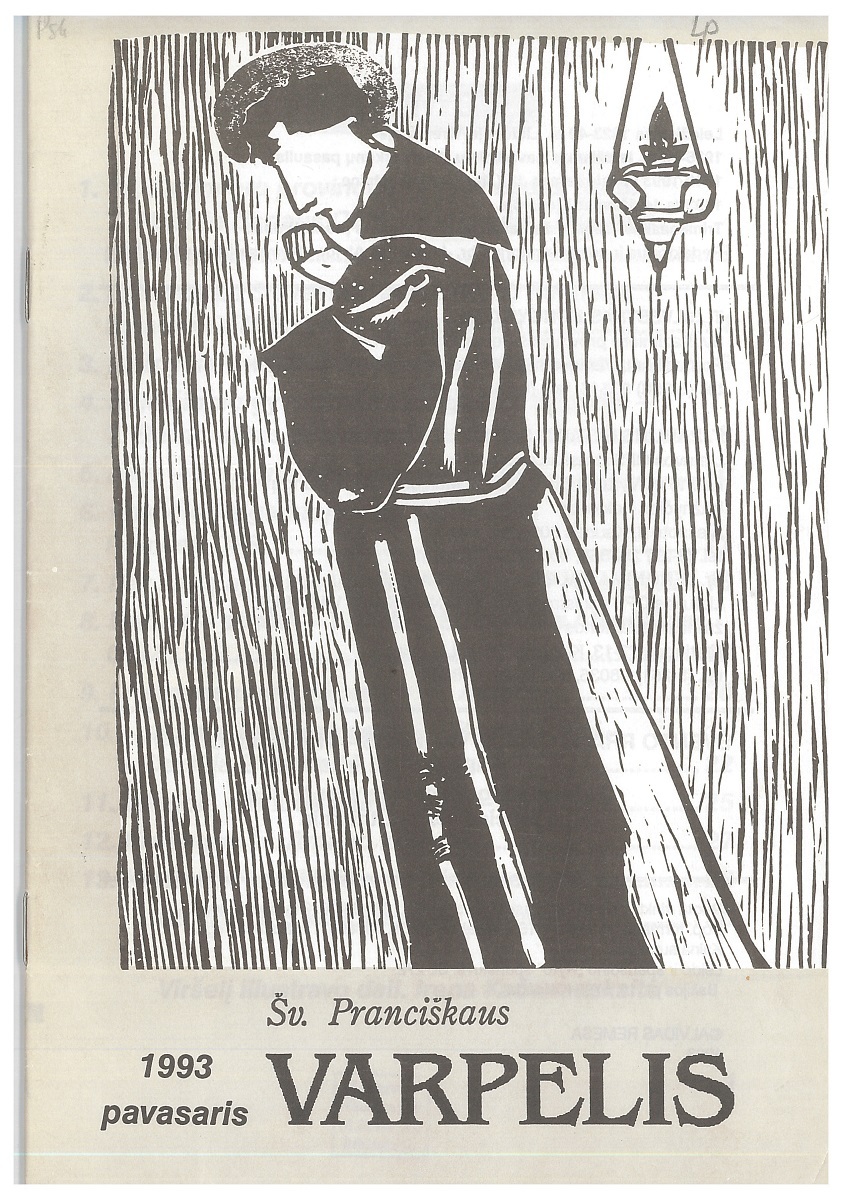
Bell of St. Francis, Spring, 1993
Bell of St. Francis
Šv. Pranciškaus varpelis
Religious communities throughout Lithuania enjoyed the freedom to pursue their activities once Lithuanian independence was restored. After fifty years of persecution during the occupation, they were able to emerge from the underground. The Franciscans immediately received assistance from their brothers in the diaspora. Like many orders, the Franciscans applied themselves to the evangelization of a society that had been spiritually repressed by the Soviet regime. A key tool for their work was the religious press.
As the influence of the Franciscans grew in Lithuania, they decided to bring the publication of the Bell of St. Francis to Lithuania, distributing it through the lay order of Franciscans, called the Third Order. The St. Casimir Minister Provincial at the time was Rev. Placidas Barius, OFM, who wrote on February 23, 1993, that it had long been planned to return the family magazine Bell of St. Francis to Lithuania. Having reviewed the editorial, printing and administrative possibilities, the leadership of the province decided that was the time to execute the plan.
From 1993 to 1994 the Bell was published in Kretinga, under editor Rev. Jeronimas Alvidas Remesa, OFM, and from 1995 to 1997 in Vilnius, when the editor was Rev. Benediktas Jurčys, OFM. From 1996 to 1997 the editor was sculptor Ksenija Jaroševaitė.
The Bell of St. Francis, published for five years (1993 to 1997) in Lithuania, continued the Franciscan tradition of the magazine published from 1923 to 1940 during independence and from 1942 to 1992 in the diaspora. -
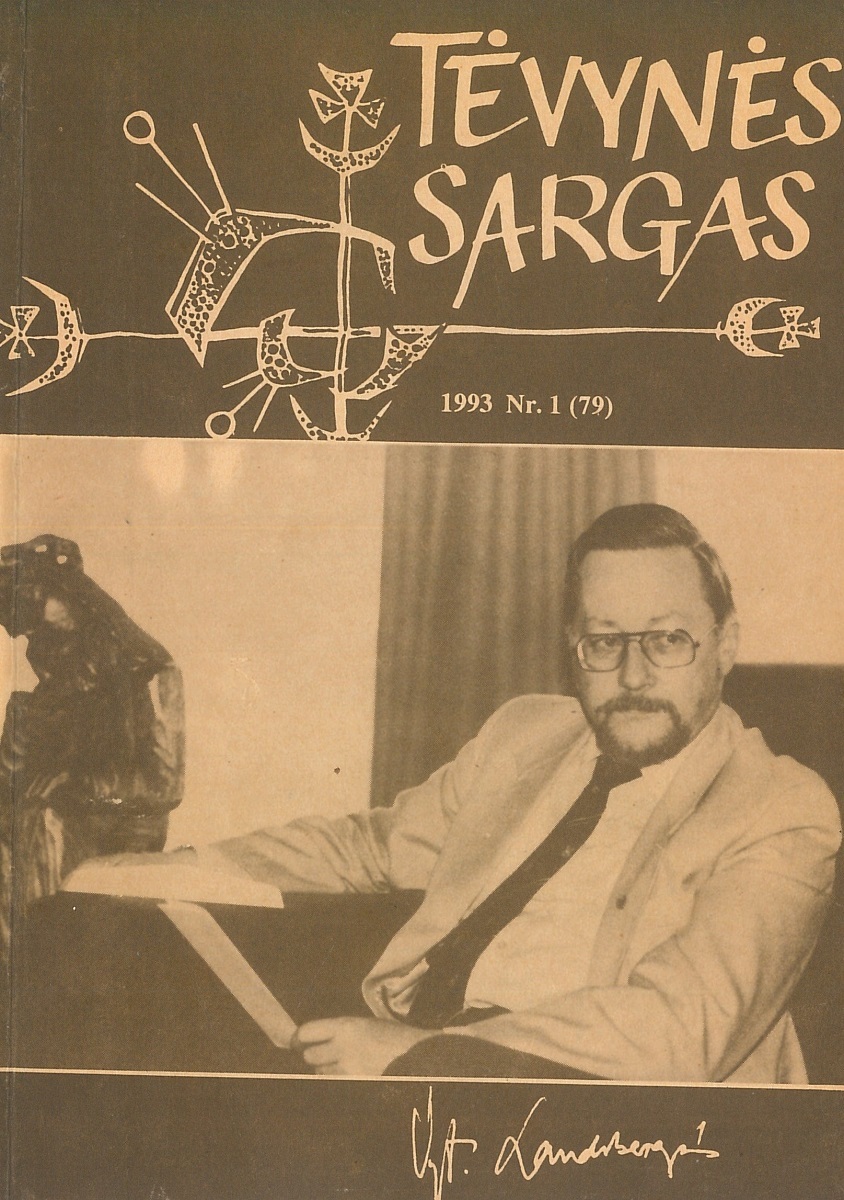
Front cover of No. 1, 1993, the first issue of the Fatherland Guard published in Lithuania
Fatherland Guard
Tėvynės sargas
This Christian-democratic cultural magazine was published from 1947 to 1949 in Germany (the displaced persons’ camps), then from 1950 to 1991 in the US and finally from 1992 to 2000 in Vilnius.
During the period of “Perestroika”, when the Soviet occupation regime became more liberalized in Lithuania, the Christian-Democratic Party was reactivated and began connecting with the Christian Democrats in the diaspora.
Christian Democrats, like every political party, strove to participate in the political and social life of Lithuania and expand its electorate. One way to do this was the press. The political weekly Review (Apžvalga) began publication in 1989, and attracted readers in the diaspora. Editor Audronė Škiudaitė invited Guard editor Pranas Povilaitis to join forces and publish in Lithuania to unify Christian Democrats in Lithuania and abroad. The publishers of the Guard agreed to the proposal, and the magazine was published in Lithuania starting in 1992, with A. Škiudaitė as editor.
The first issue published in Lithuania consisted mostly of articles that had been compiled by P. Povilaitis. Material by writers in the diaspora appeared later as well, but with time the authors were mostly native Lithuanians. The magazine was largely supported by subscribers in the diaspora and the National Foundation in the US, where fundraising projects were launched periodically.
A portion of subscriptions were sent to the US, with the remainder distributed free of charge or for a nominal price in Lithuania. Due to internal tensions, a split occurred within the ranks of the Christian Democrats and publication ended in 2000.
Issues of the Fatherland Guard from 1947-1991 are available on the portal epaveldas.lt. -
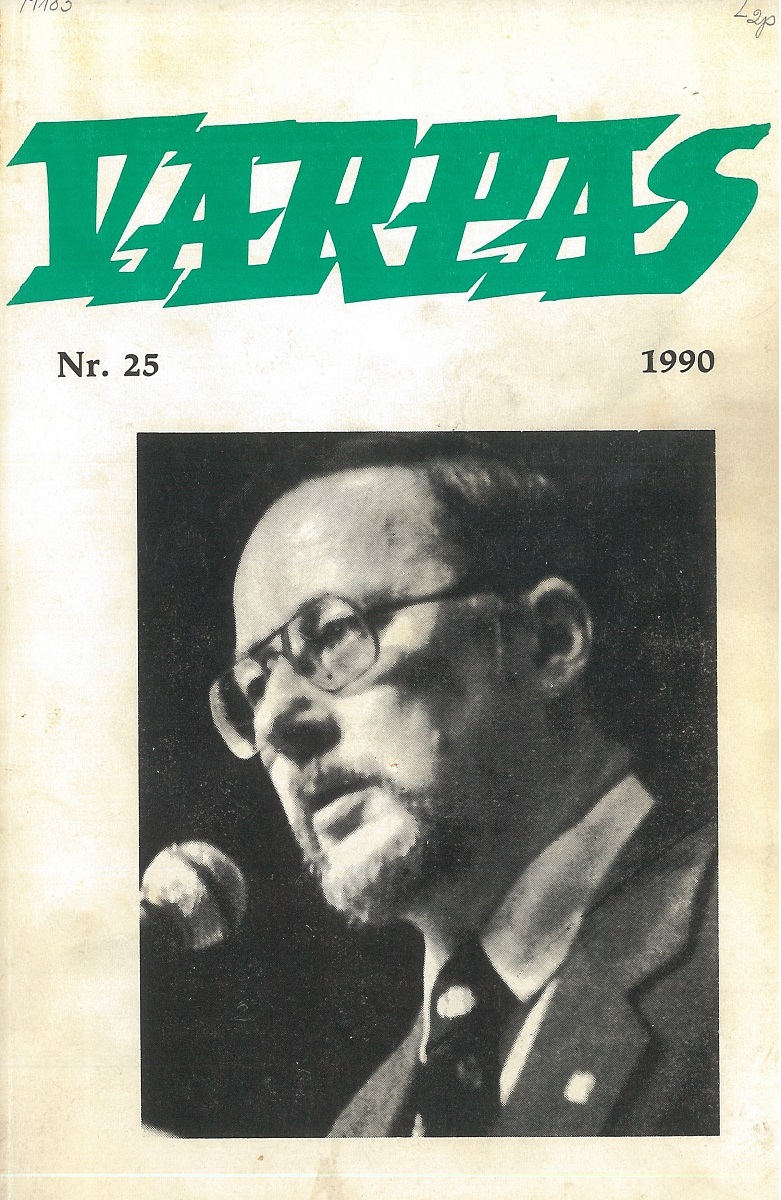
The Bell, published upon the restoration of Lithuanian Independence, No. 25, 1990
The Bell
Varpas
Lithuanian patriot Vincas Kudirka established the original Bell (referring to a church bell) in 1889 to reawaken national awareness, and it became a shining example for future generations. The name was chosen by many publications. One of those was published from 1953 to 2008 by the Varpas Society in the diaspora, and from 2009 to 2016 in Lithuania.
When independence was restored, the processes taking place in Lithuania were of utmost interest to the publishers of the Bell. It was natural that more and more writers were native Lithuanians, and ties developed with Lithuanian political parties and organizations. For a time distribution of the Bell in Lithuania was undertaken by the Lithuanian Democratic Party.
A friendship begun in 2002 between editor (since 1964) Antanas Kučas of USA and Lithuanian journalist Audronė Škiudaitė, and their subsequent collaborative work determined the future of the magazine. At first A. Škiudaitė assisted A. Kučas, whose health was already failing, to compile a few of the annual issues, with his name remaining on the masthead. With time, he transferred publication to Lithuania and entrusted his editorial duties entirely to A. Škiudaitė.
As in most cases, the publication of periodicals in the diaspora was funded by donations. For many years, the most generous supporter of the Bell was Alena Vileišytė-Devenienė (related by marriage to politician Kazys Bobelis). Once again, its publication in Lithuania was funded by donations from subscribers in the diaspora. The Bell was distributed free of charge in Lithuania and abroad. After his death in 2009, his widow Teresė Kučienė financed several issues in his memory. Once her support ended, the magazine stopped publication in 2016.
Although it was not a regular periodical (it appeared once every 1 to 3 years), the Bell raised civic awareness of Lithuania and its issues throughout the country and its diaspora and was instrumental in creating bonds between them.

